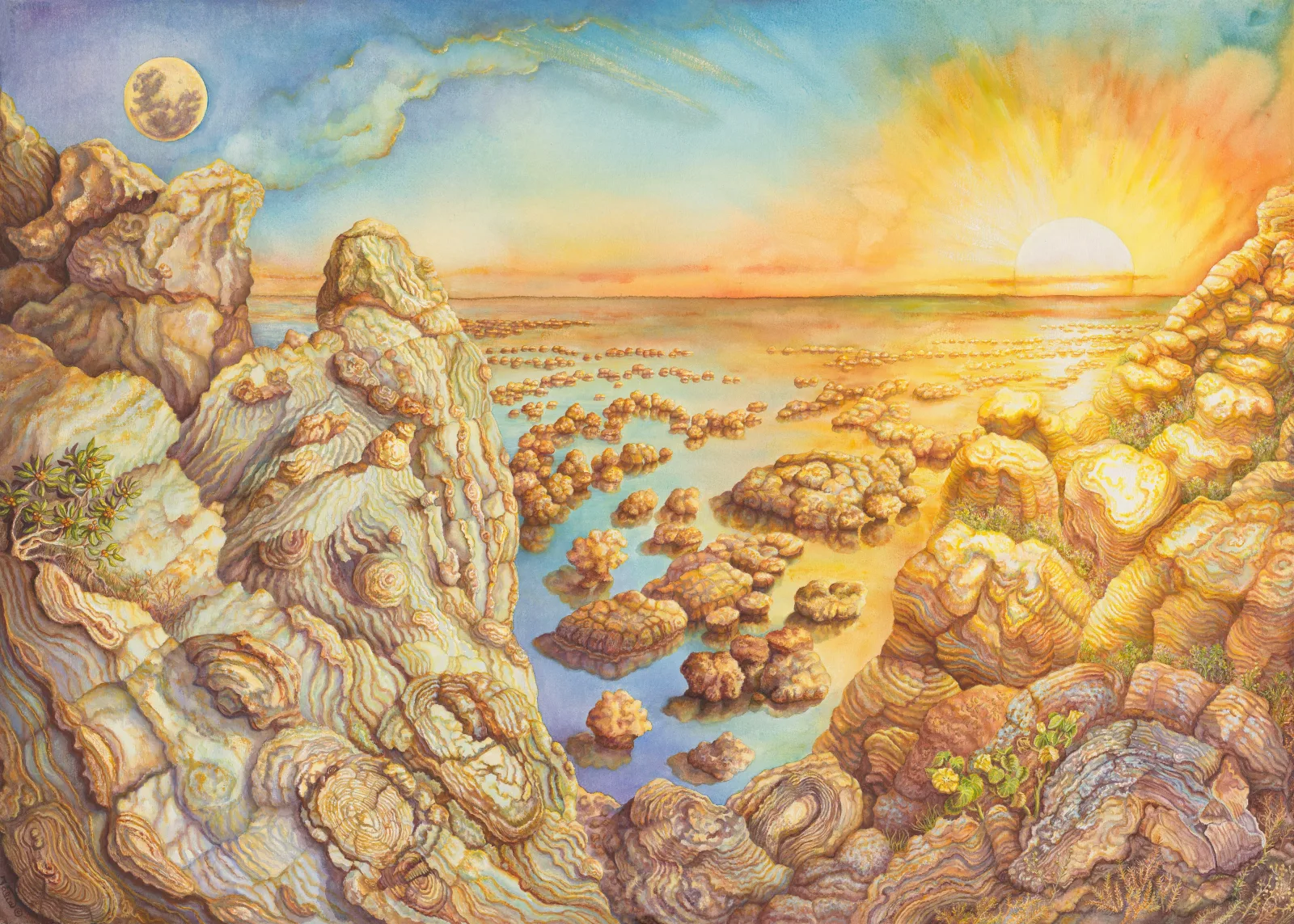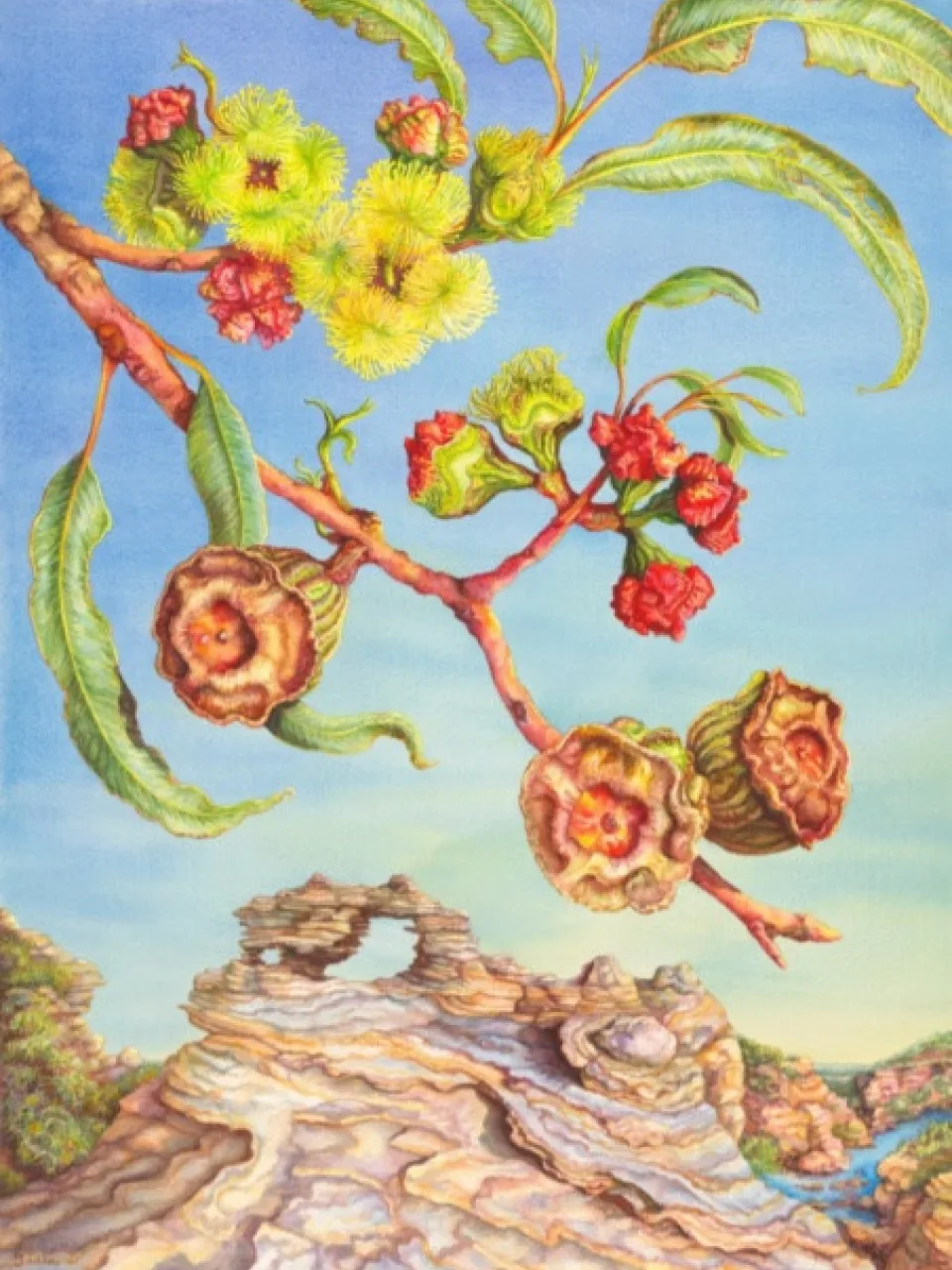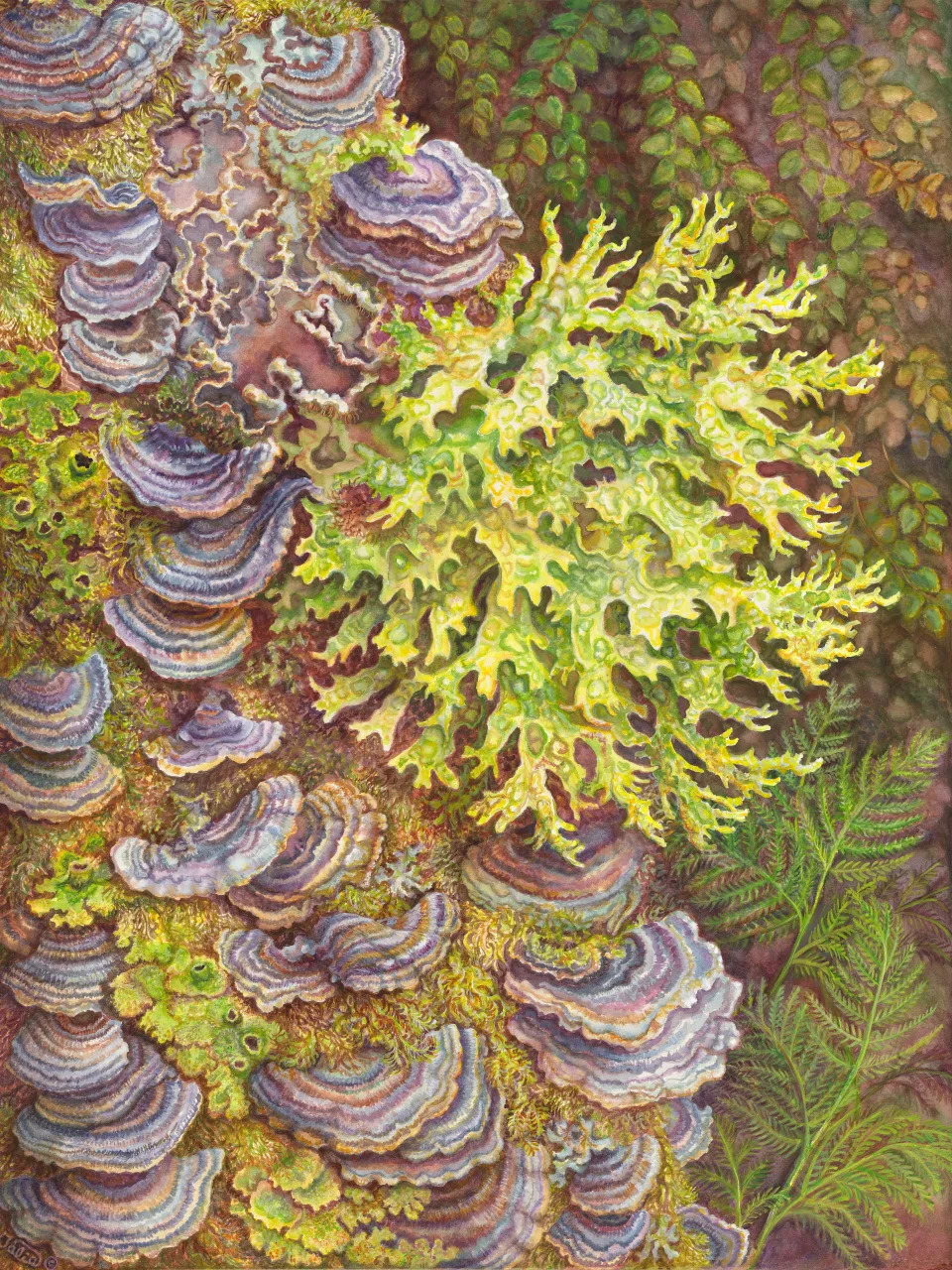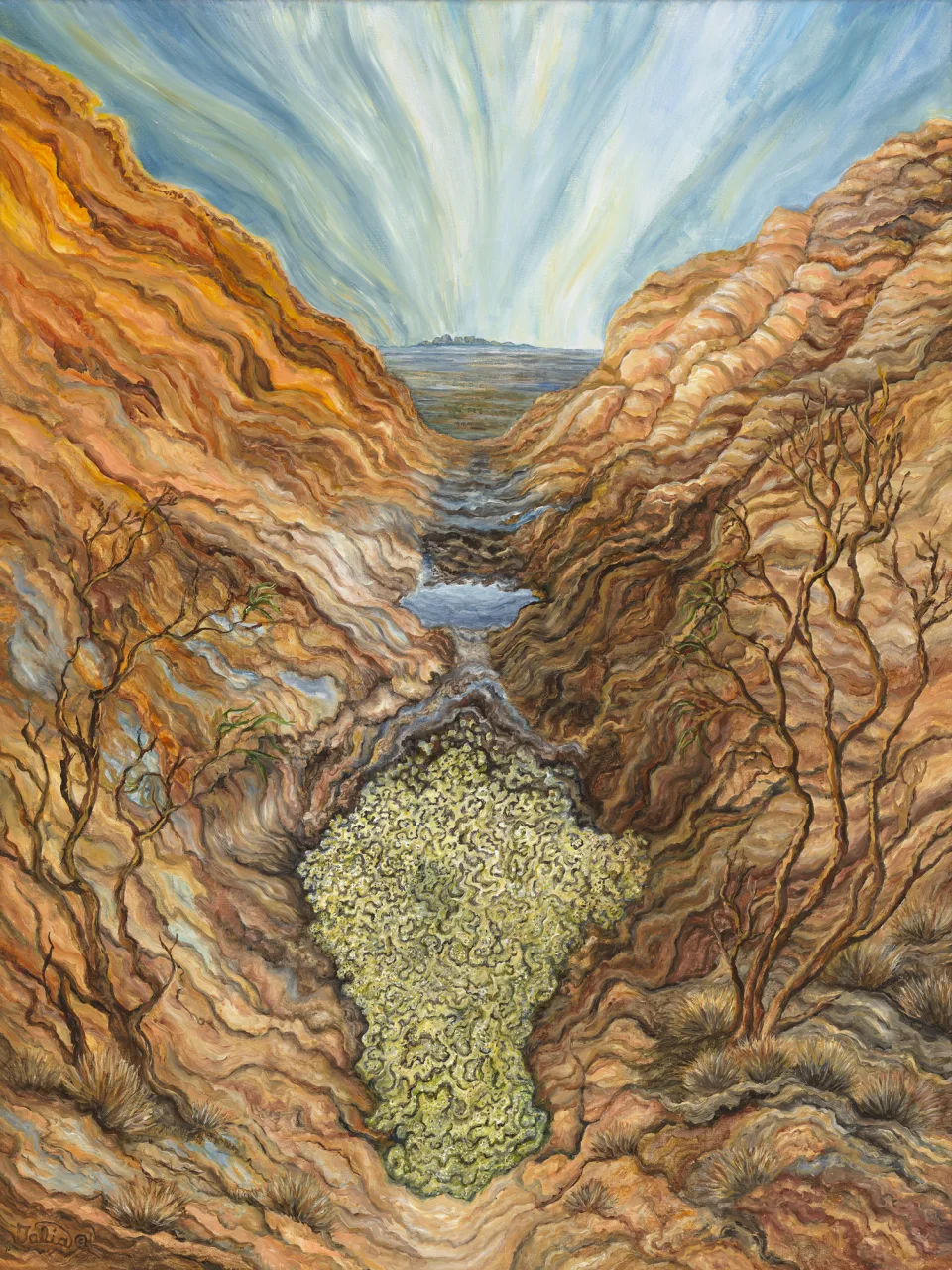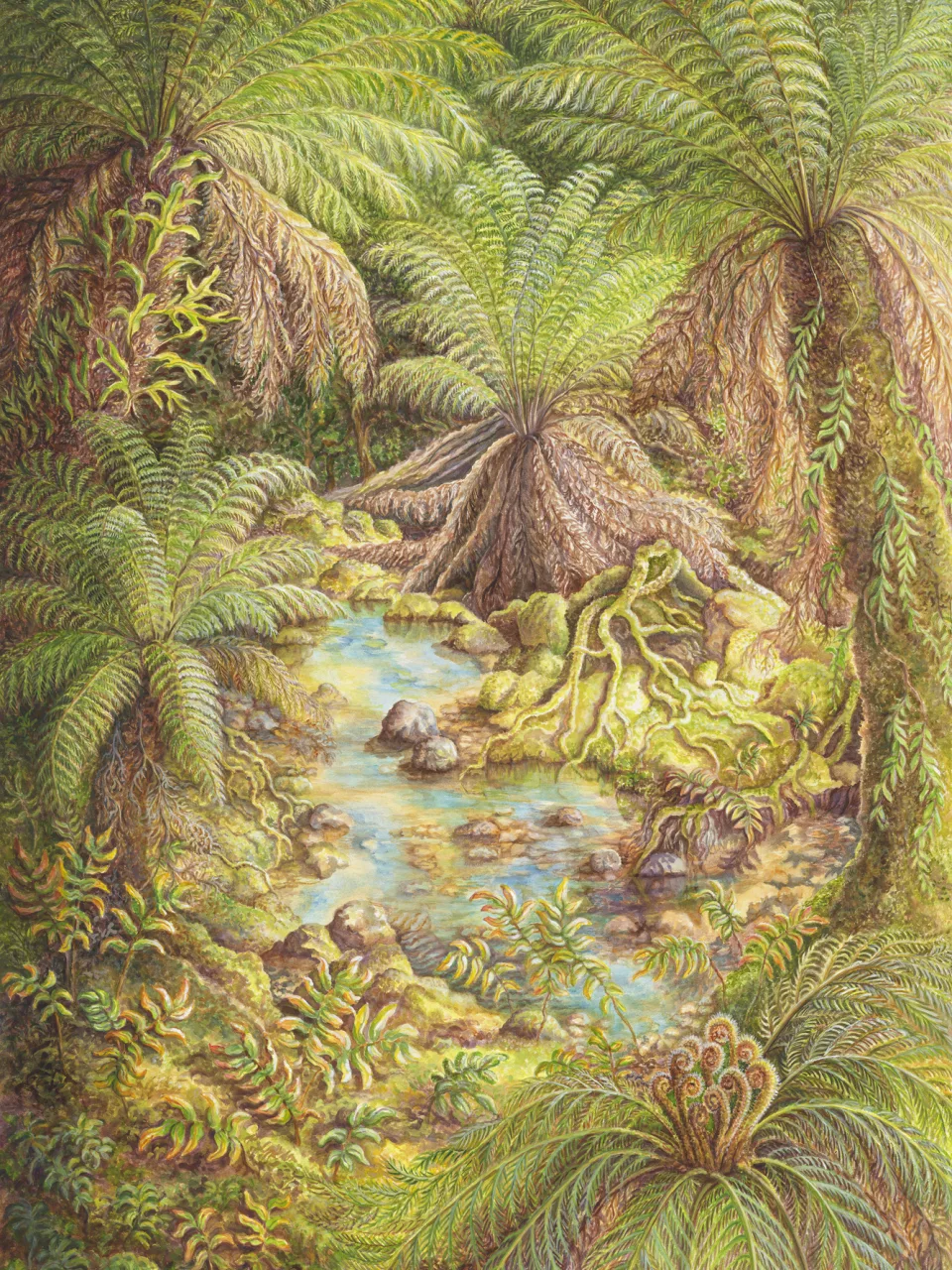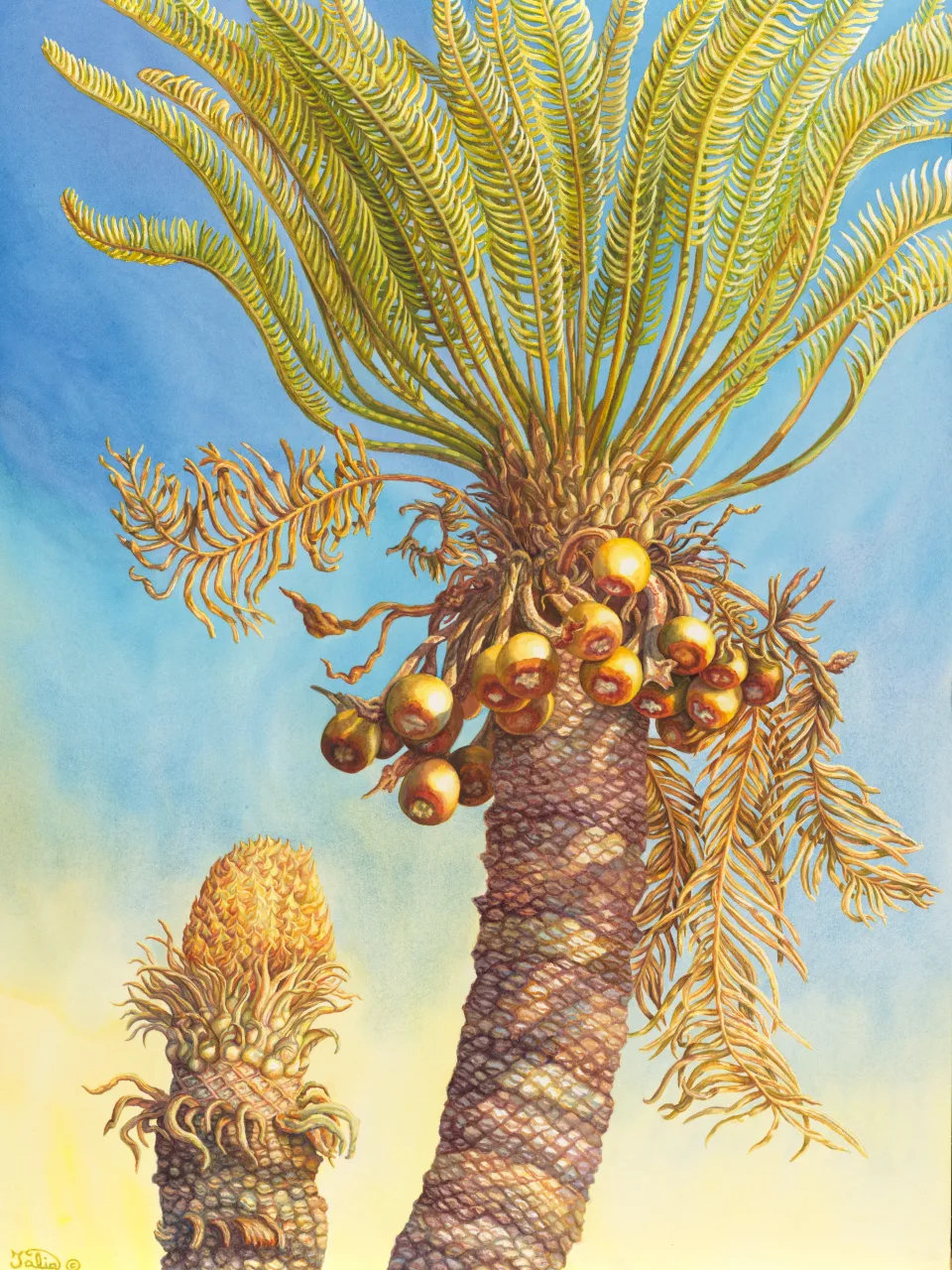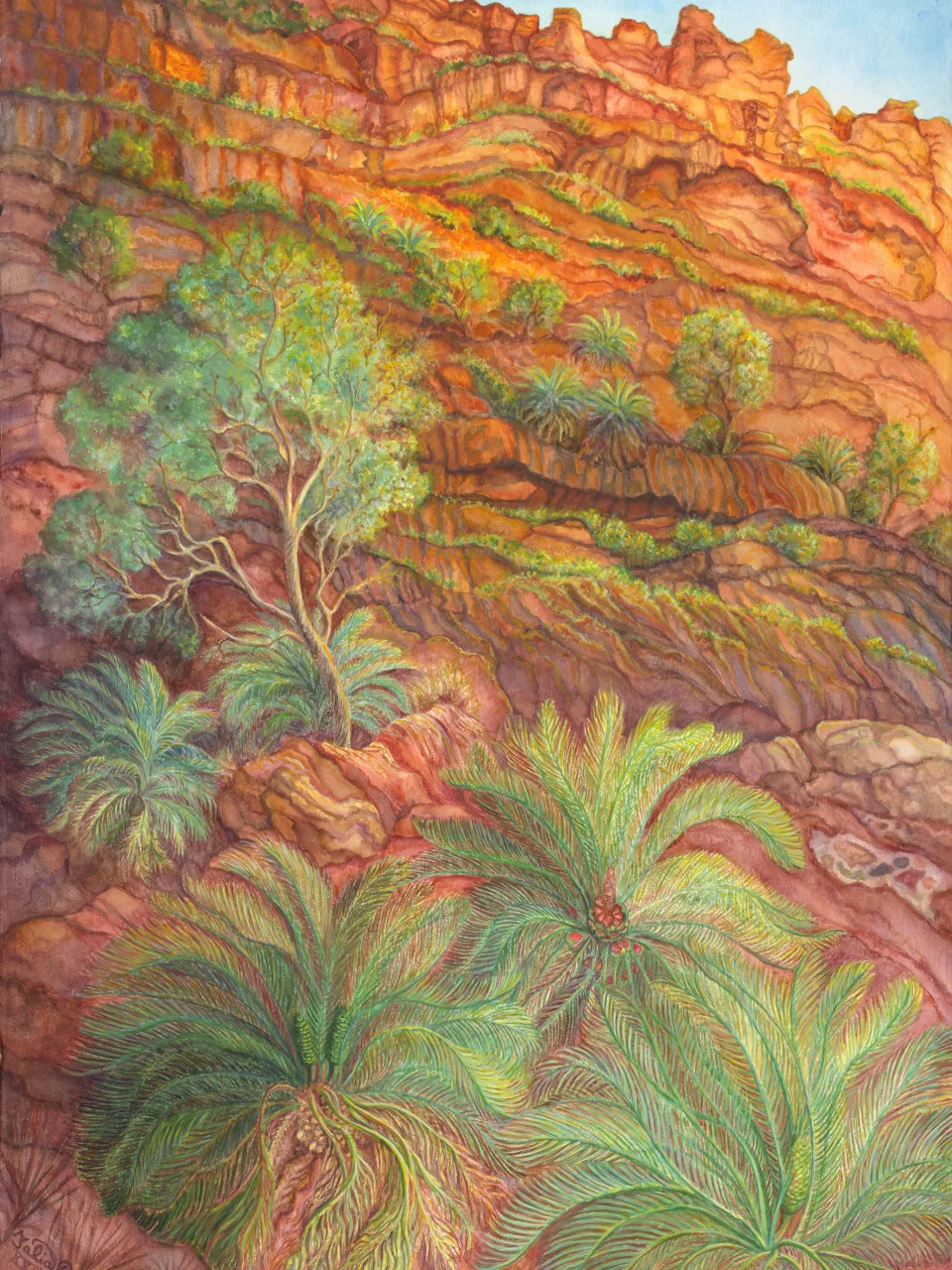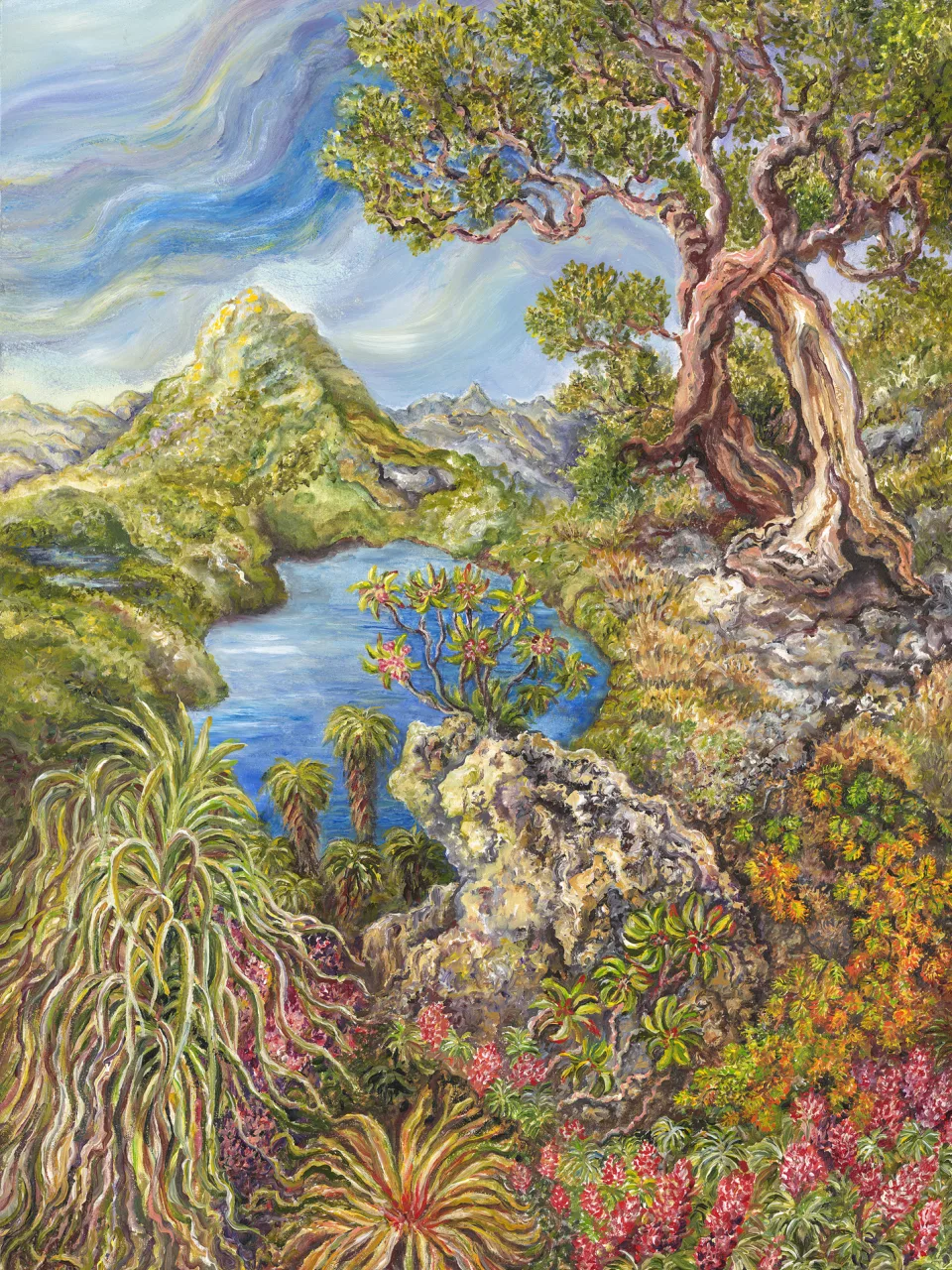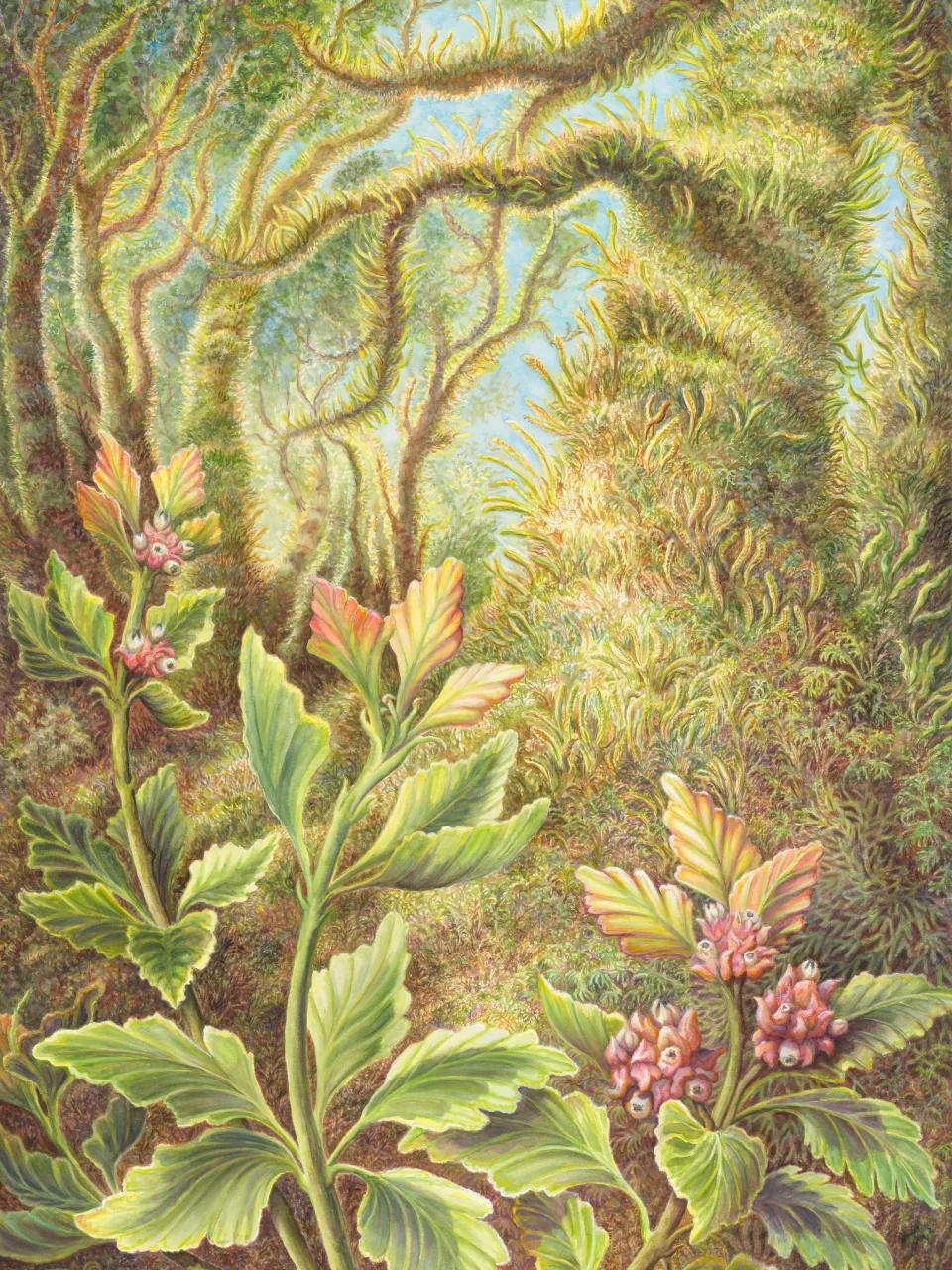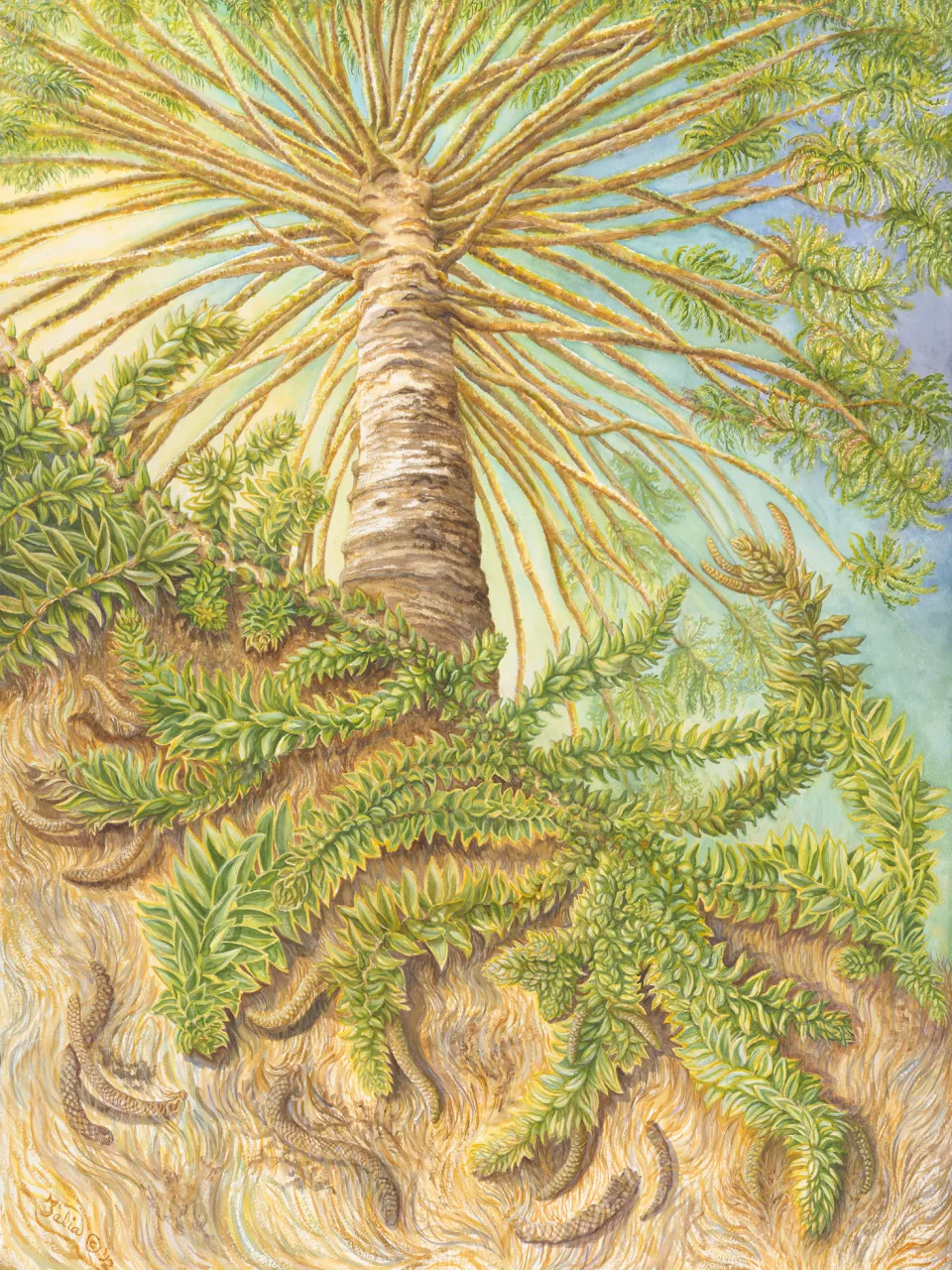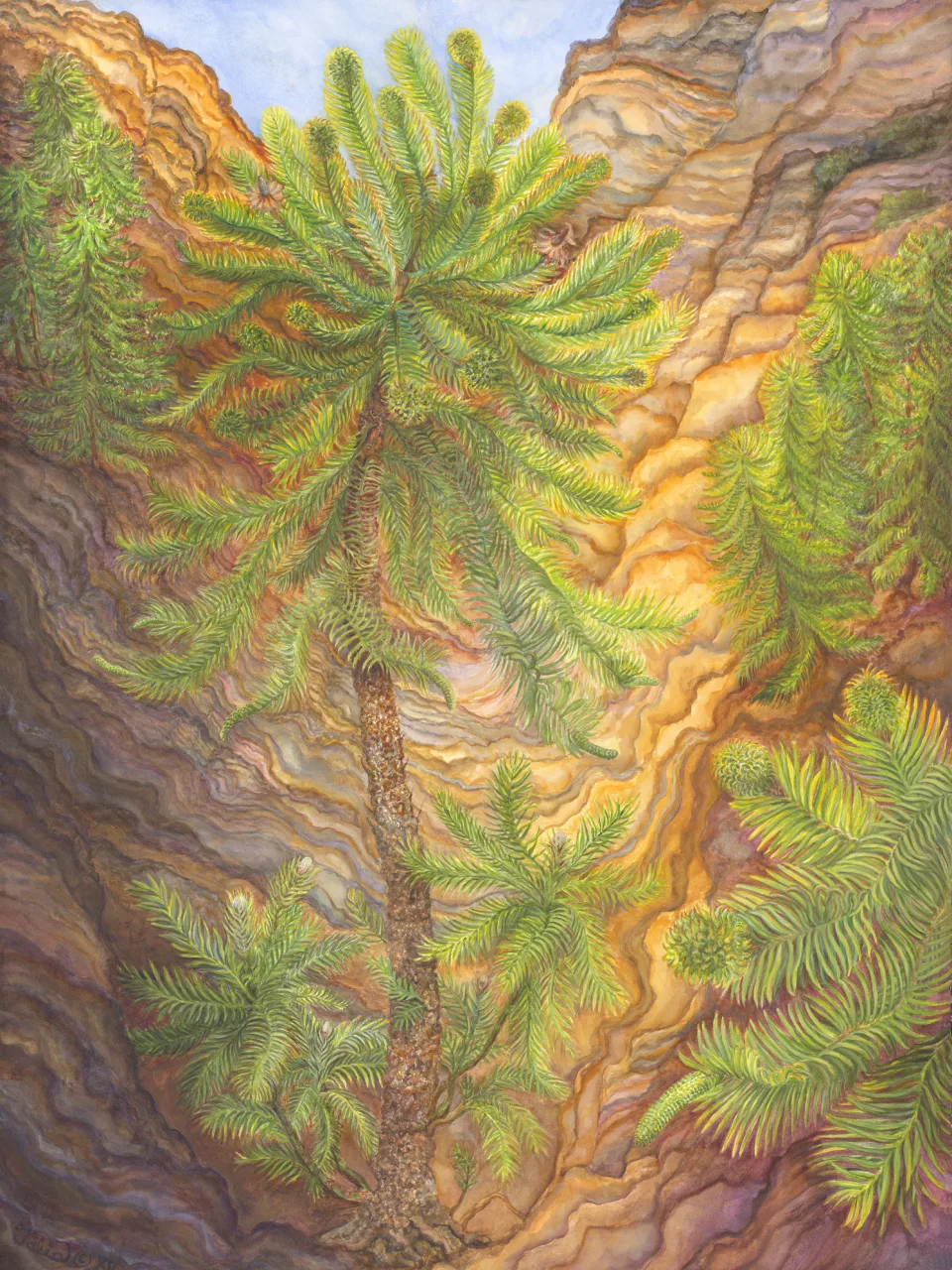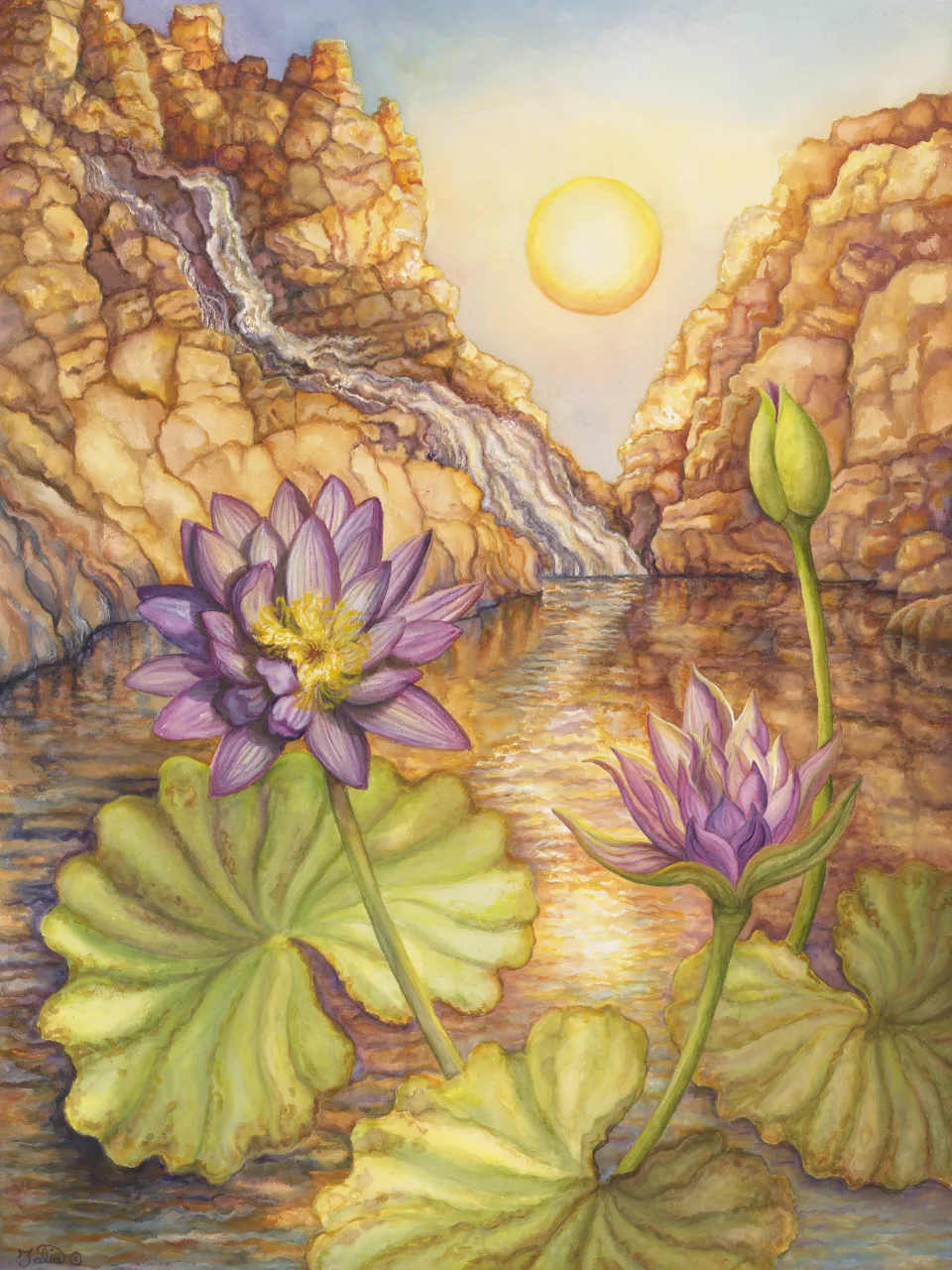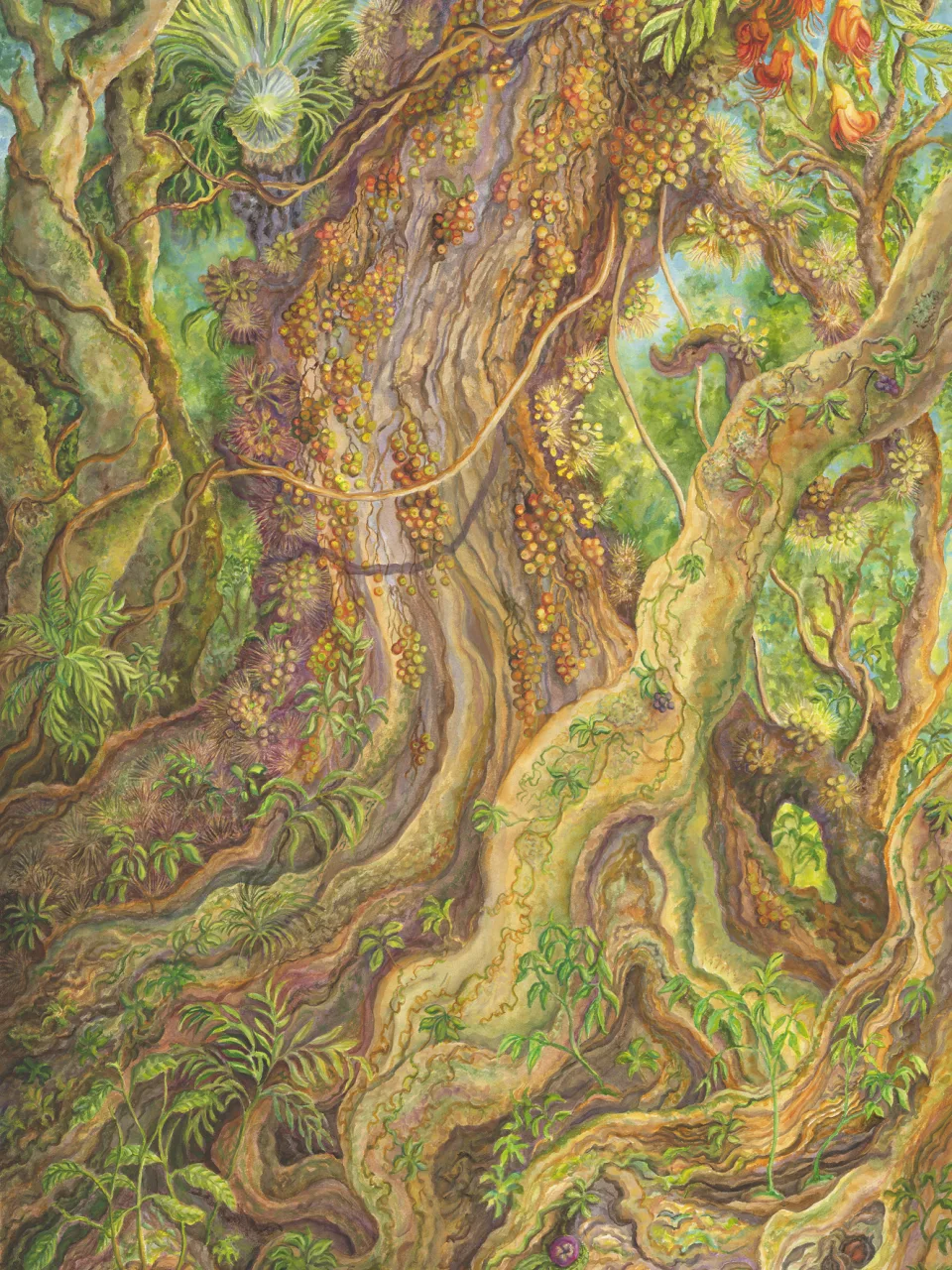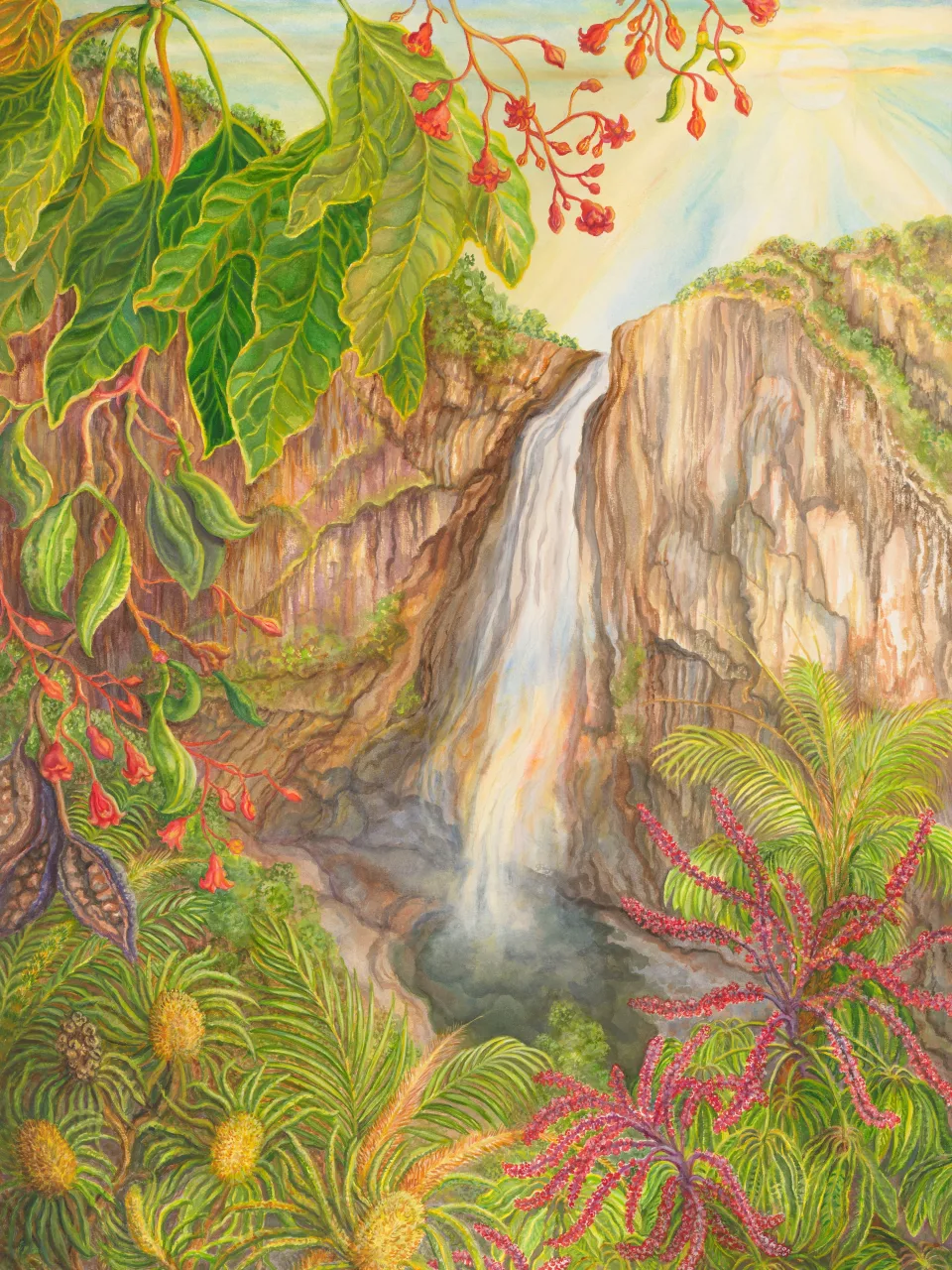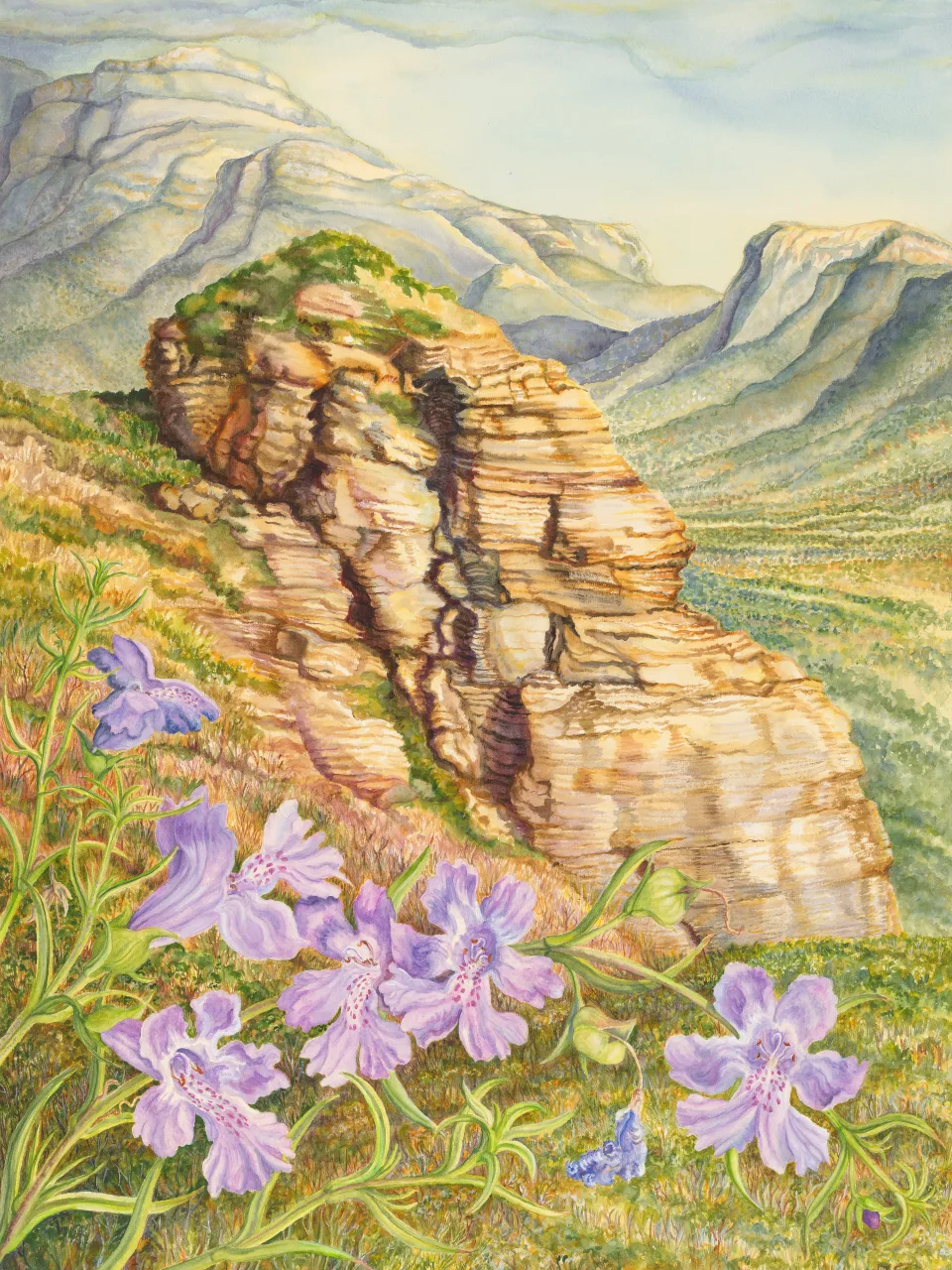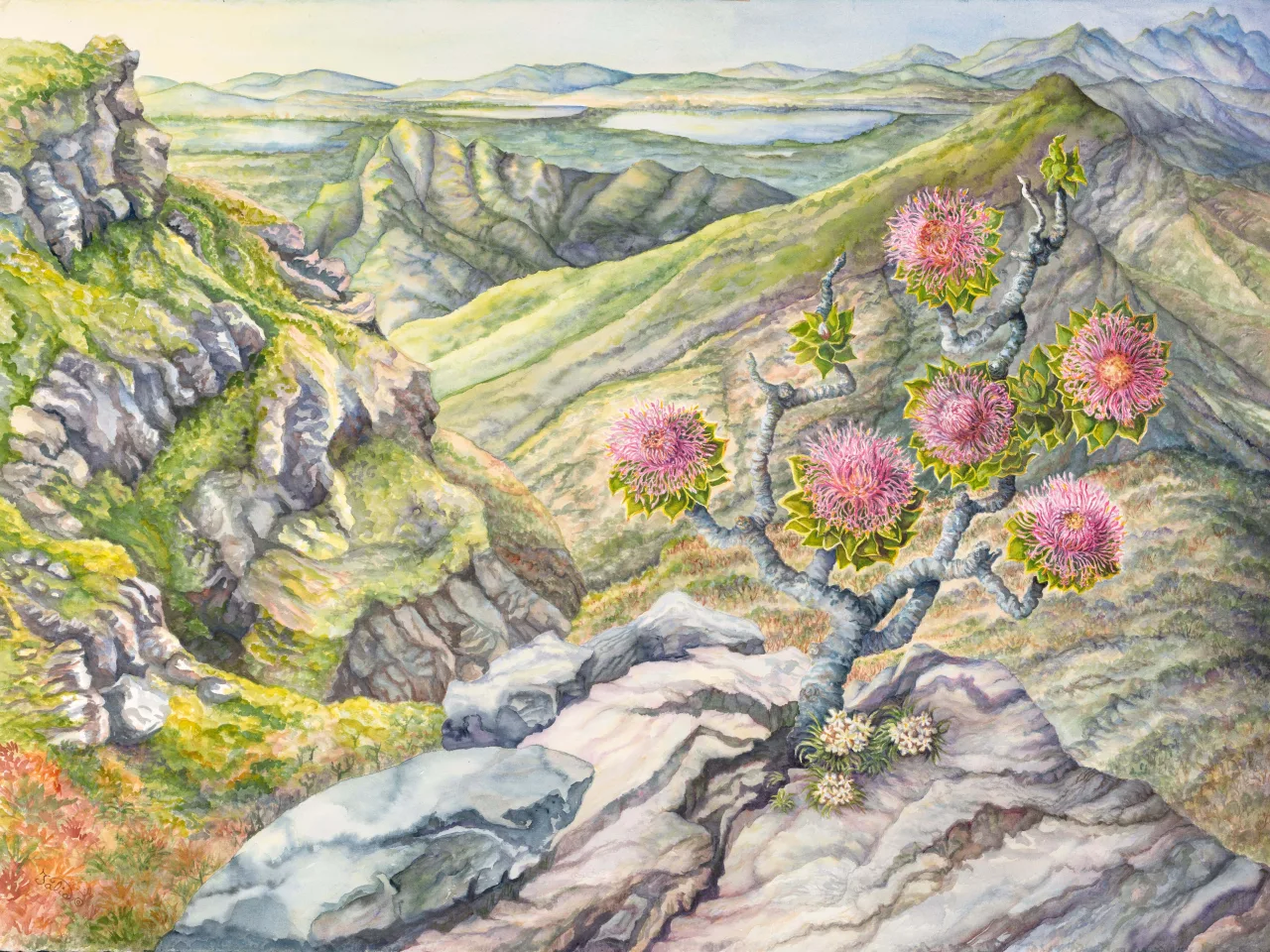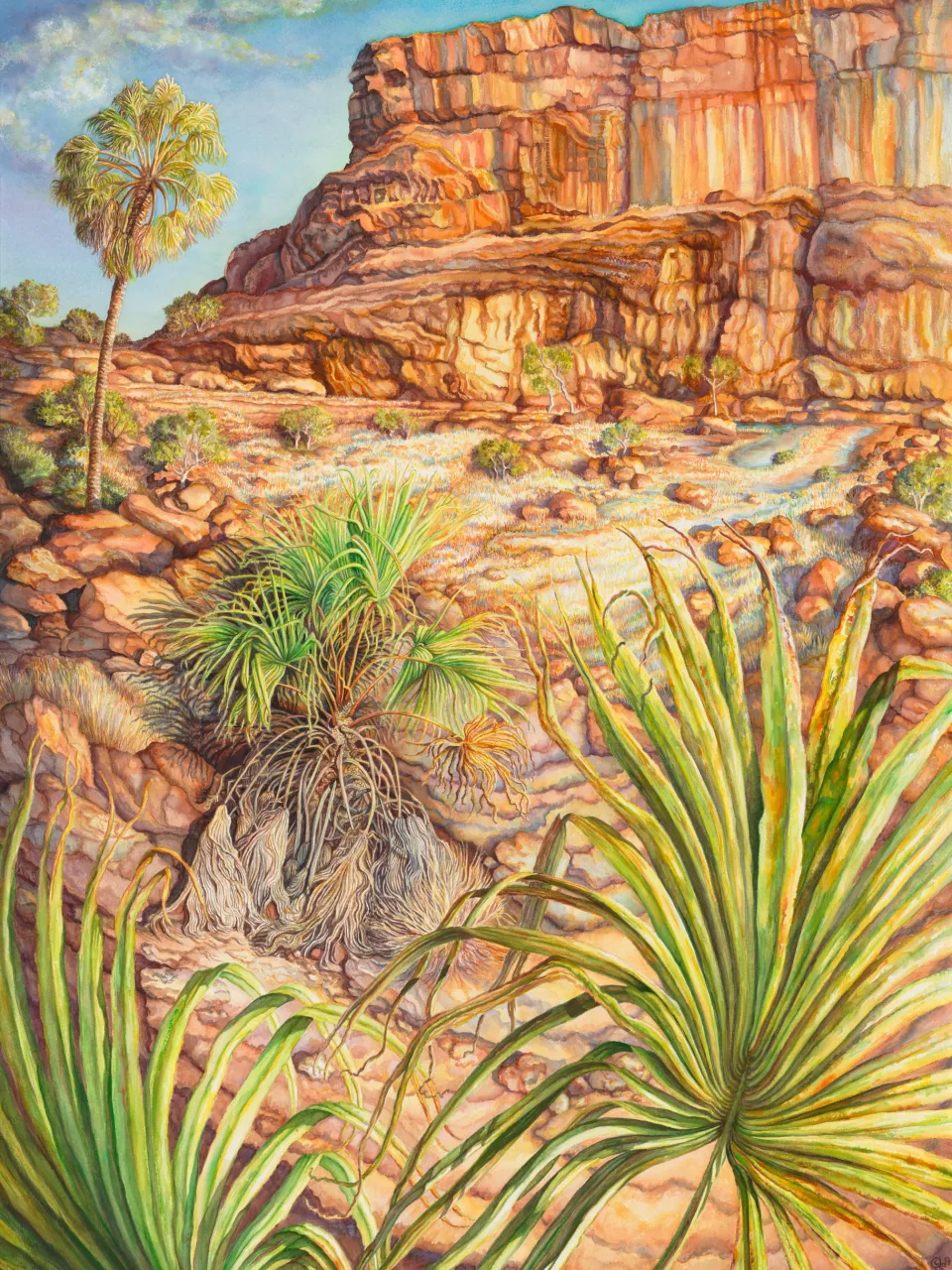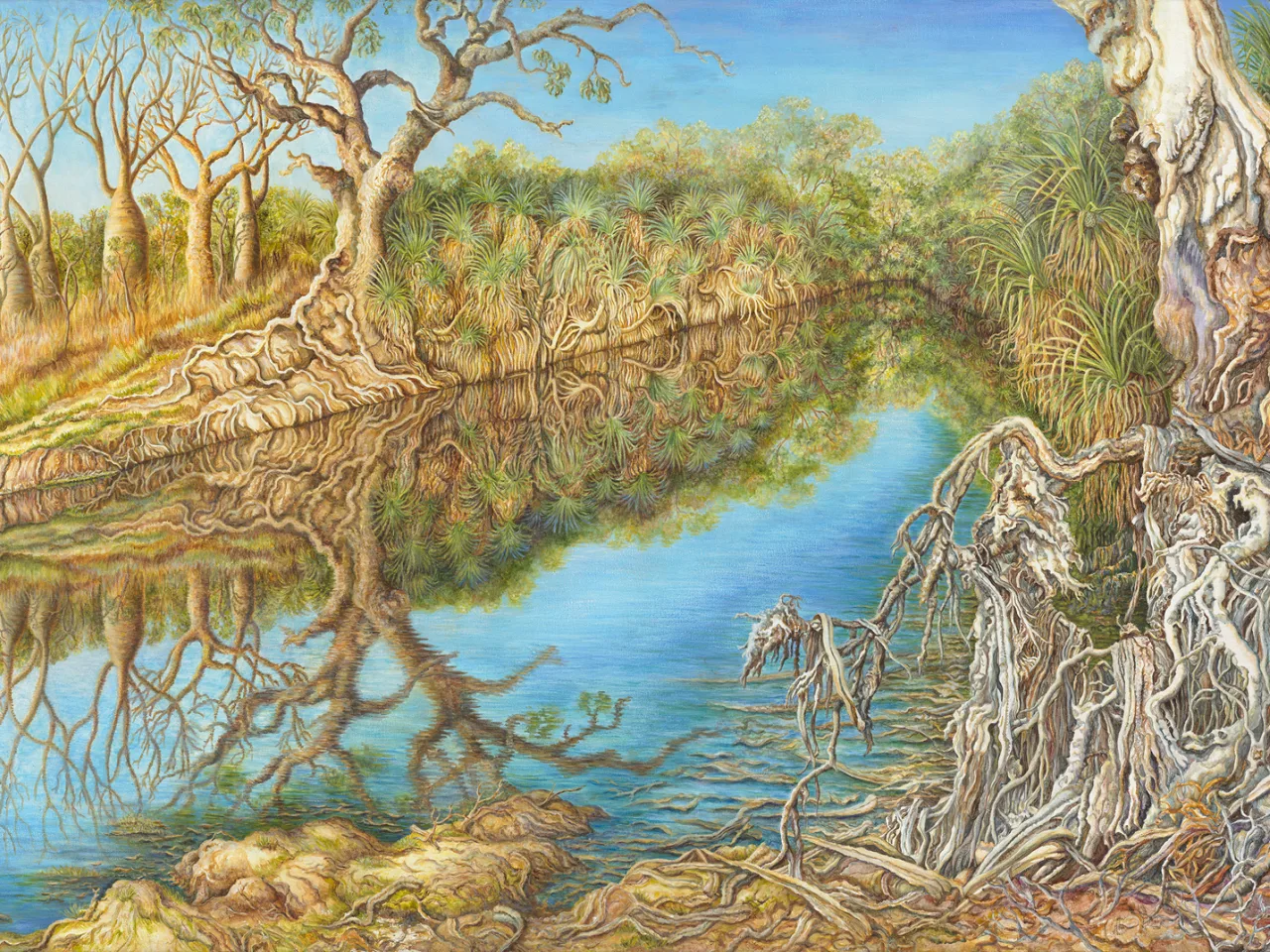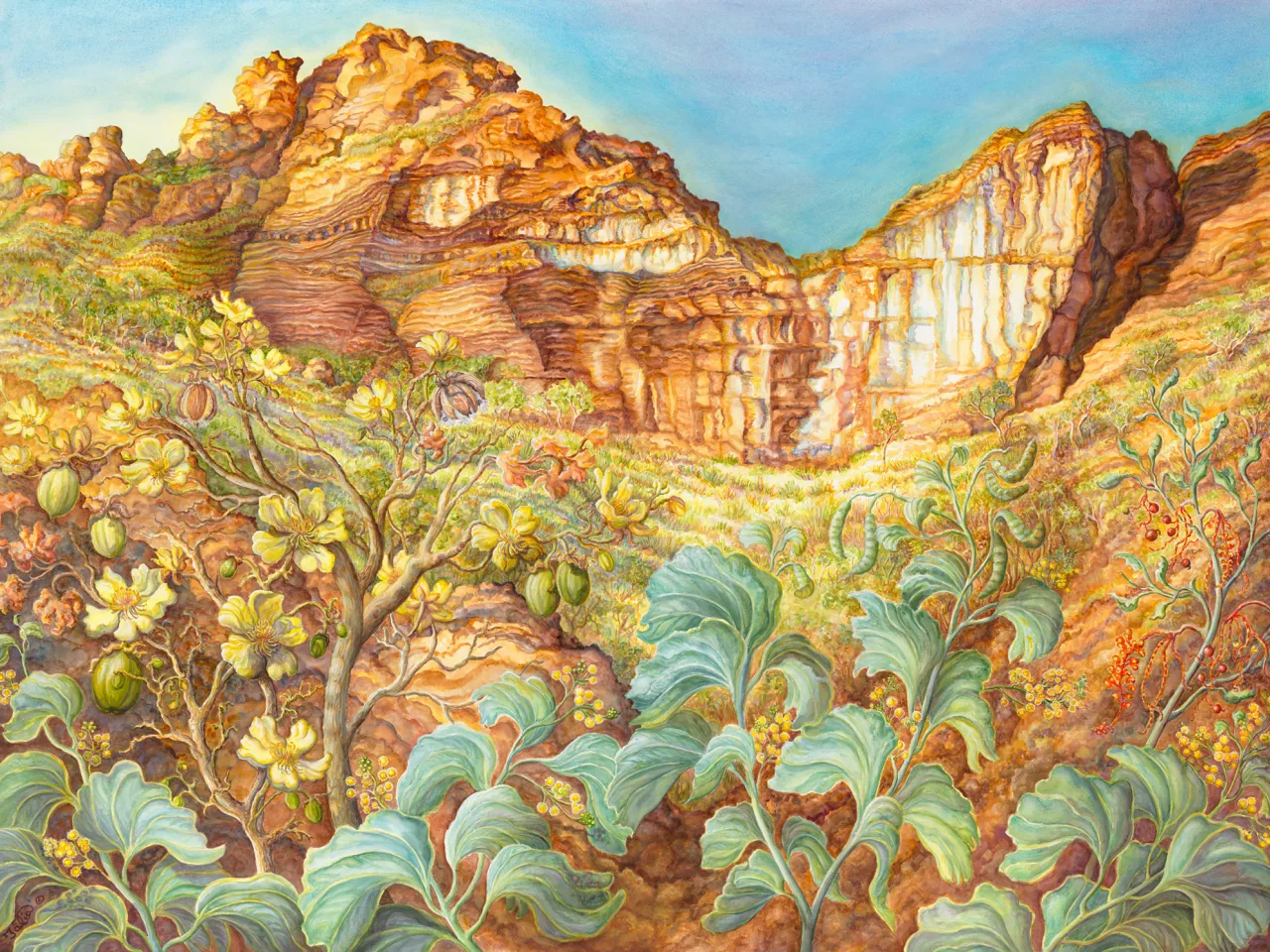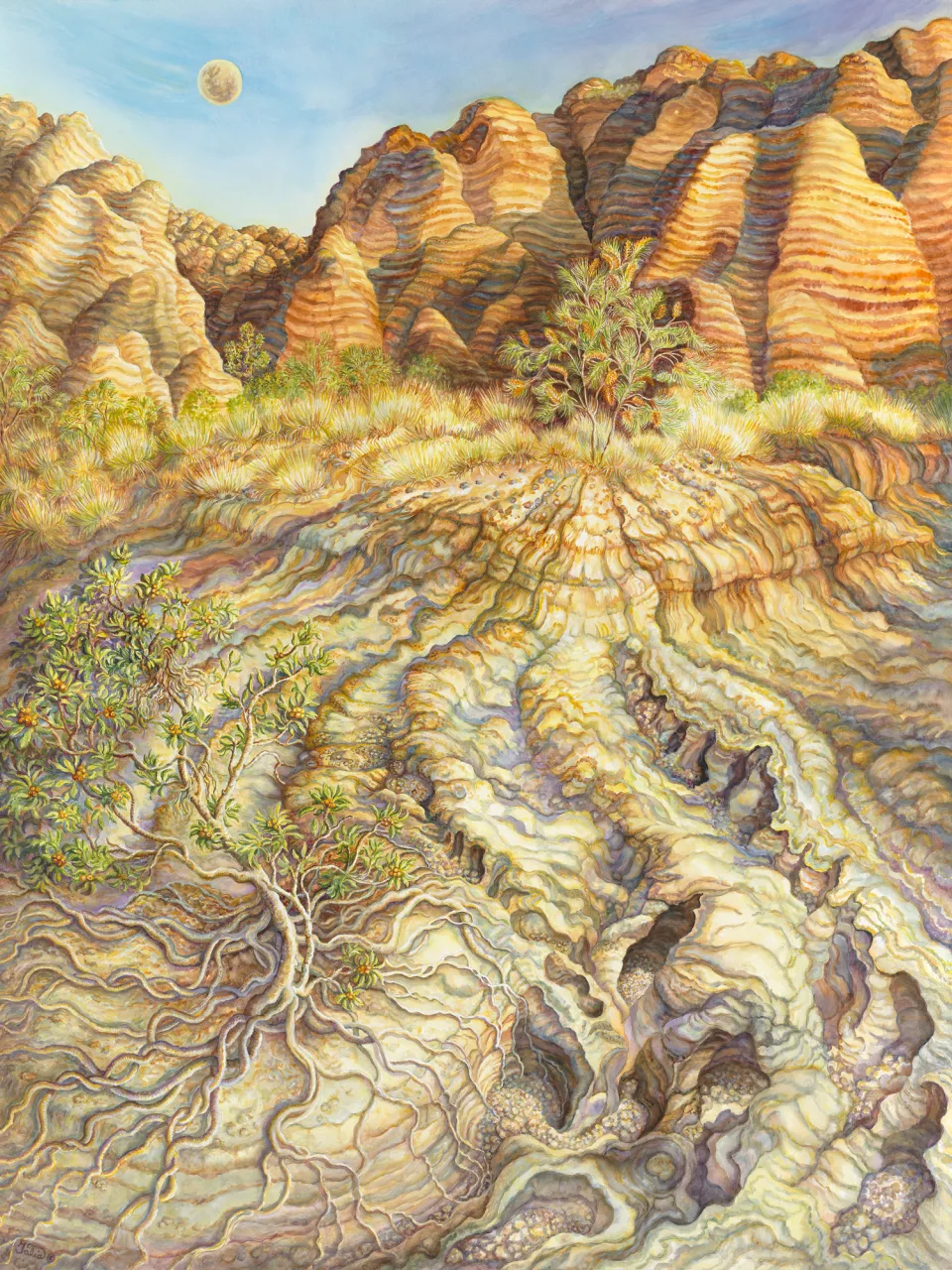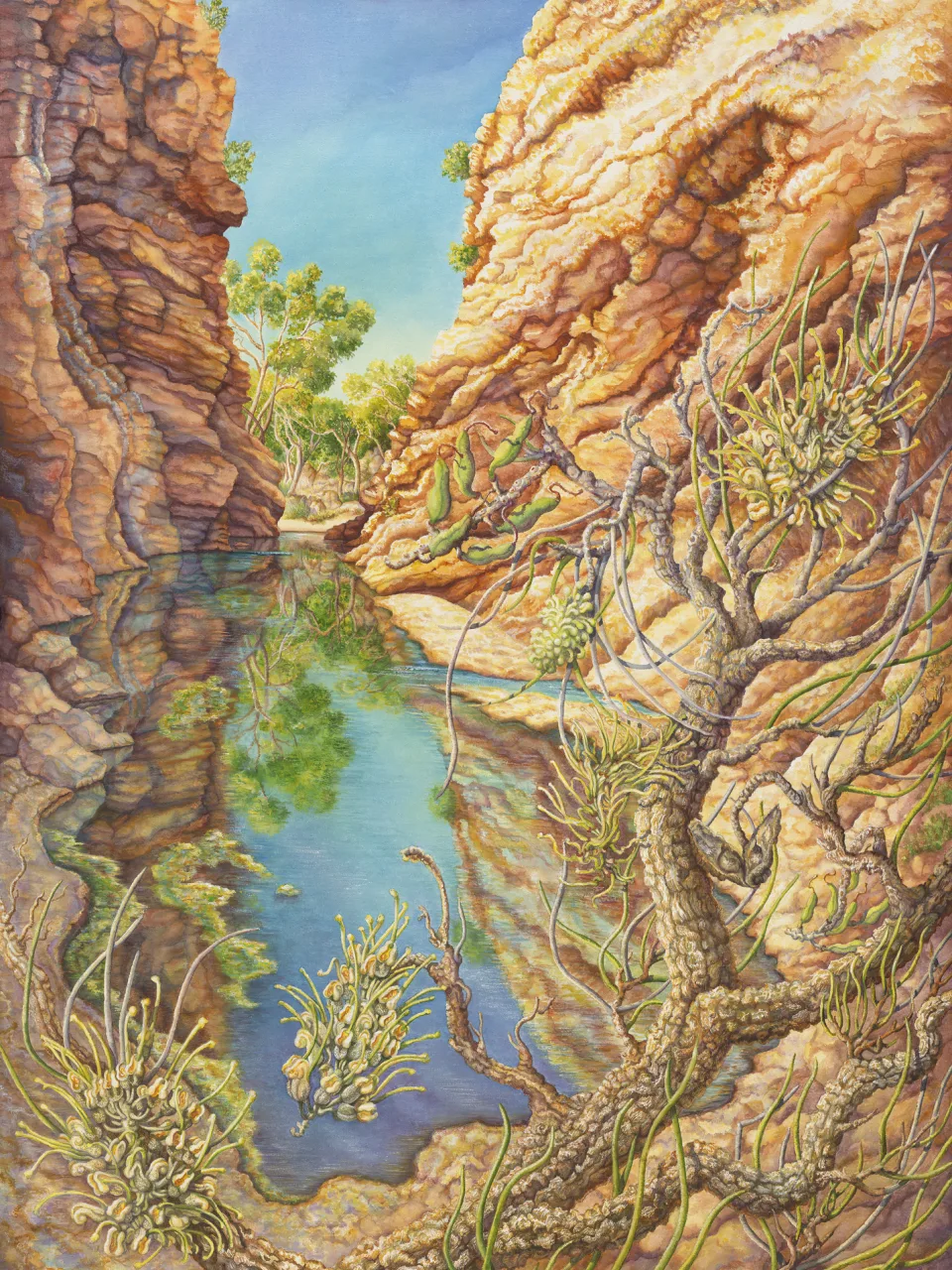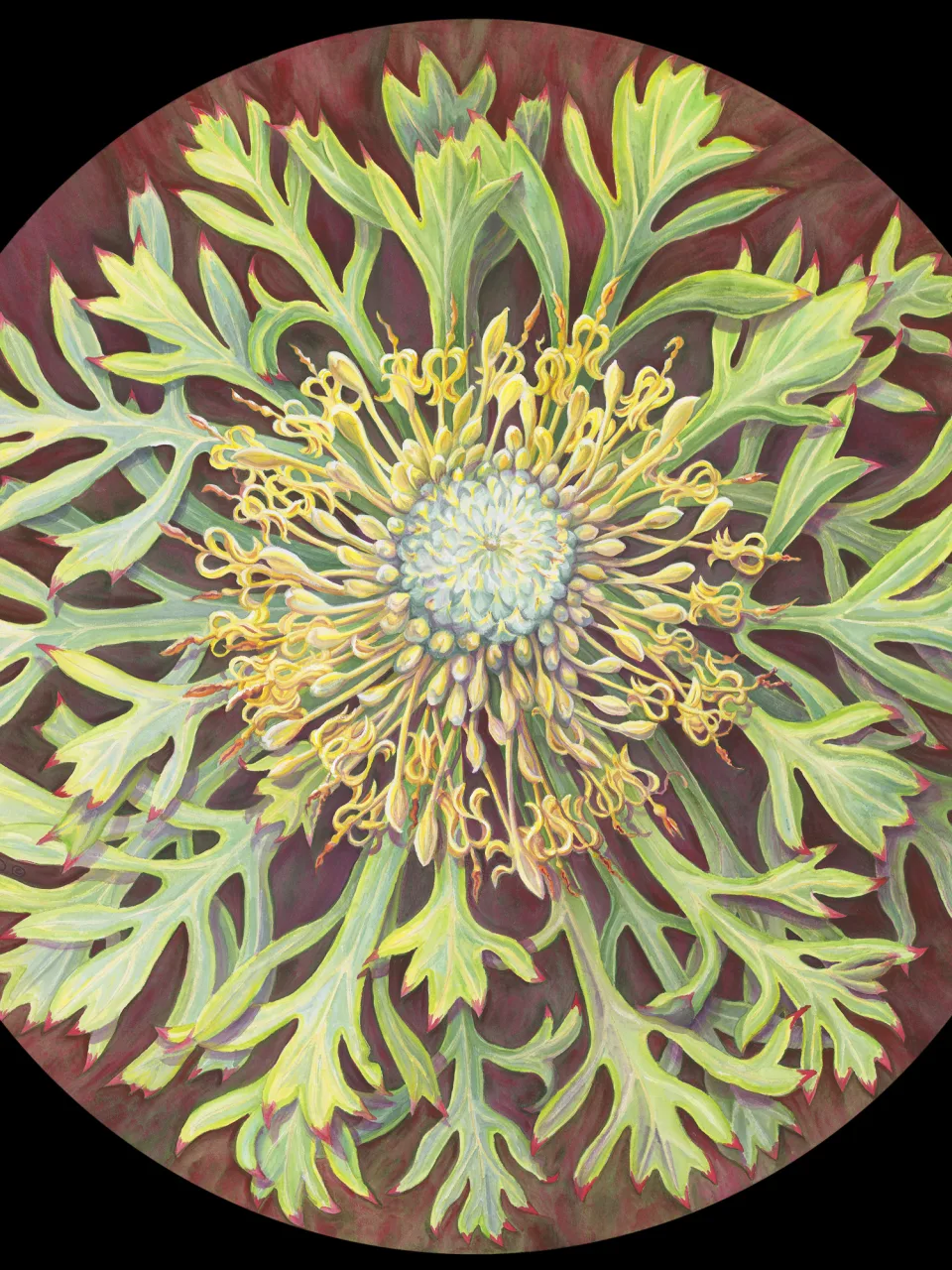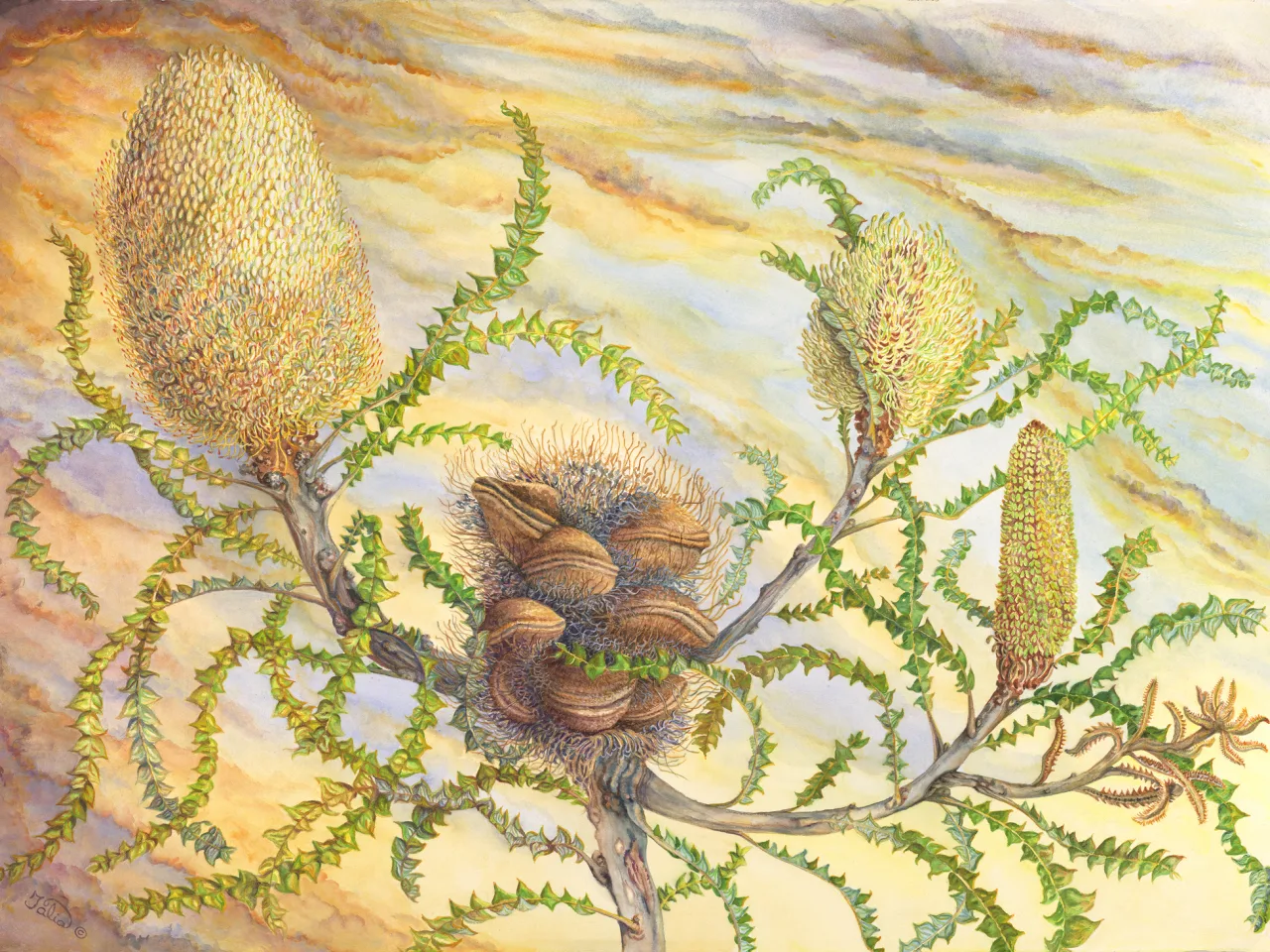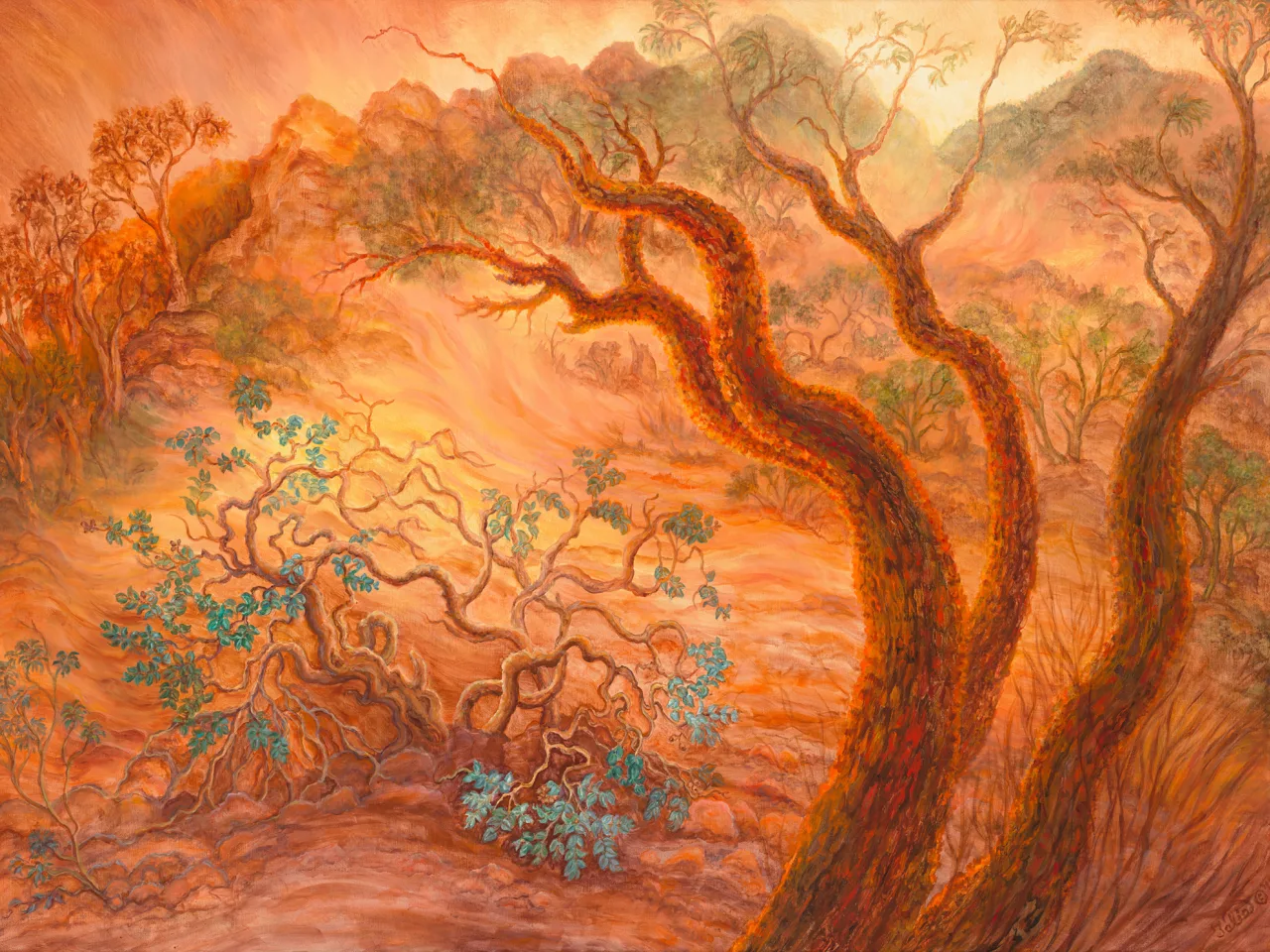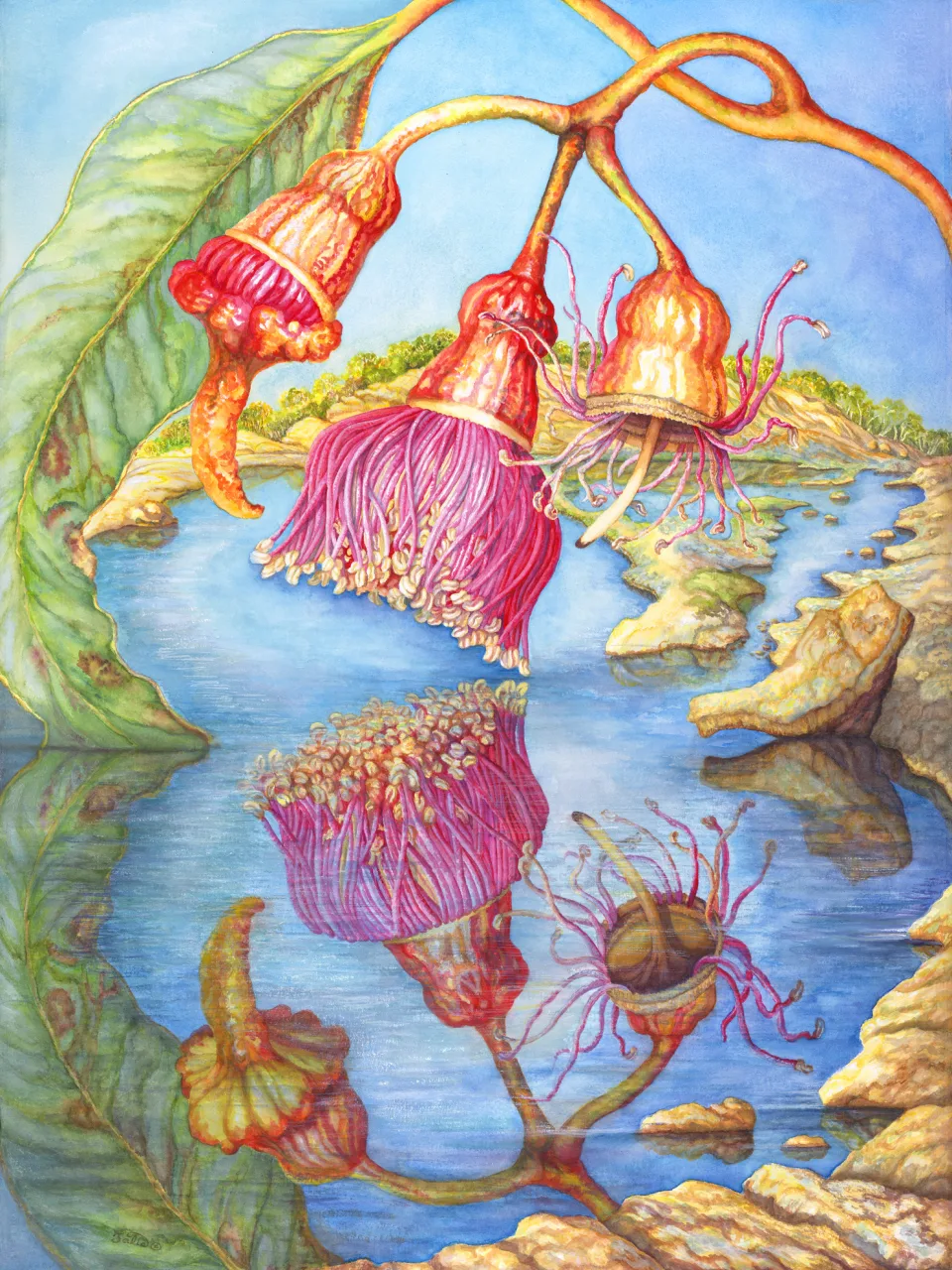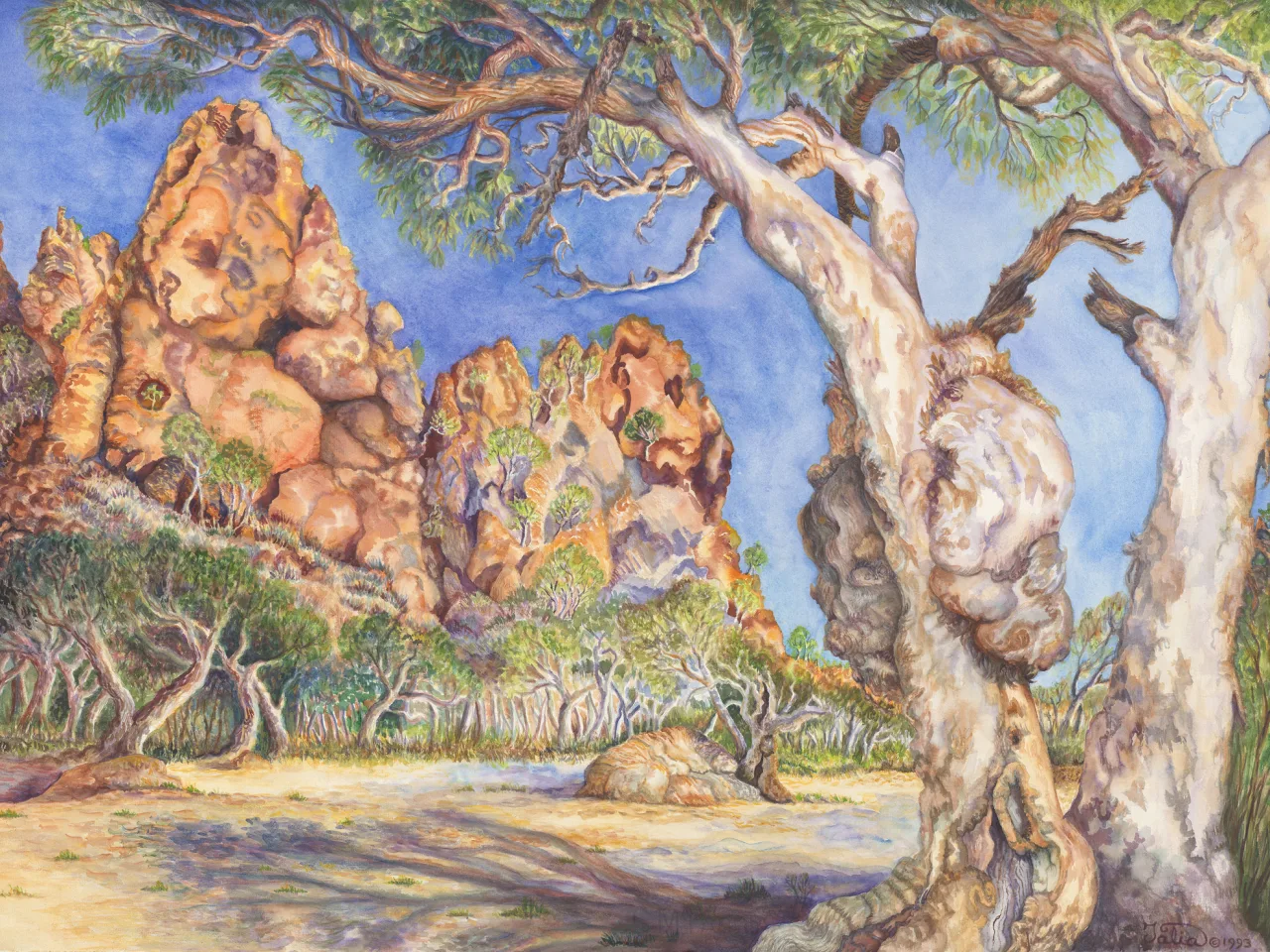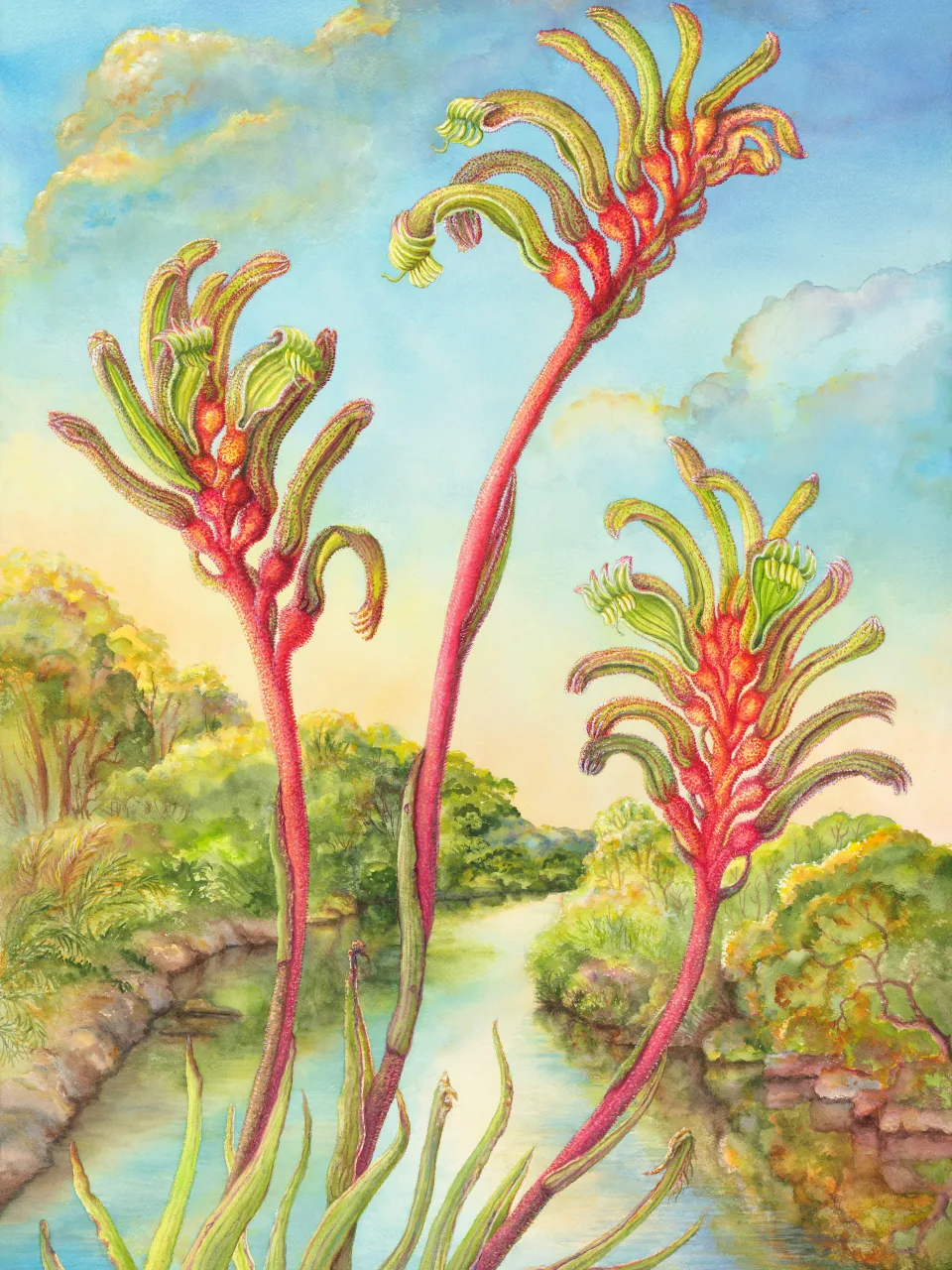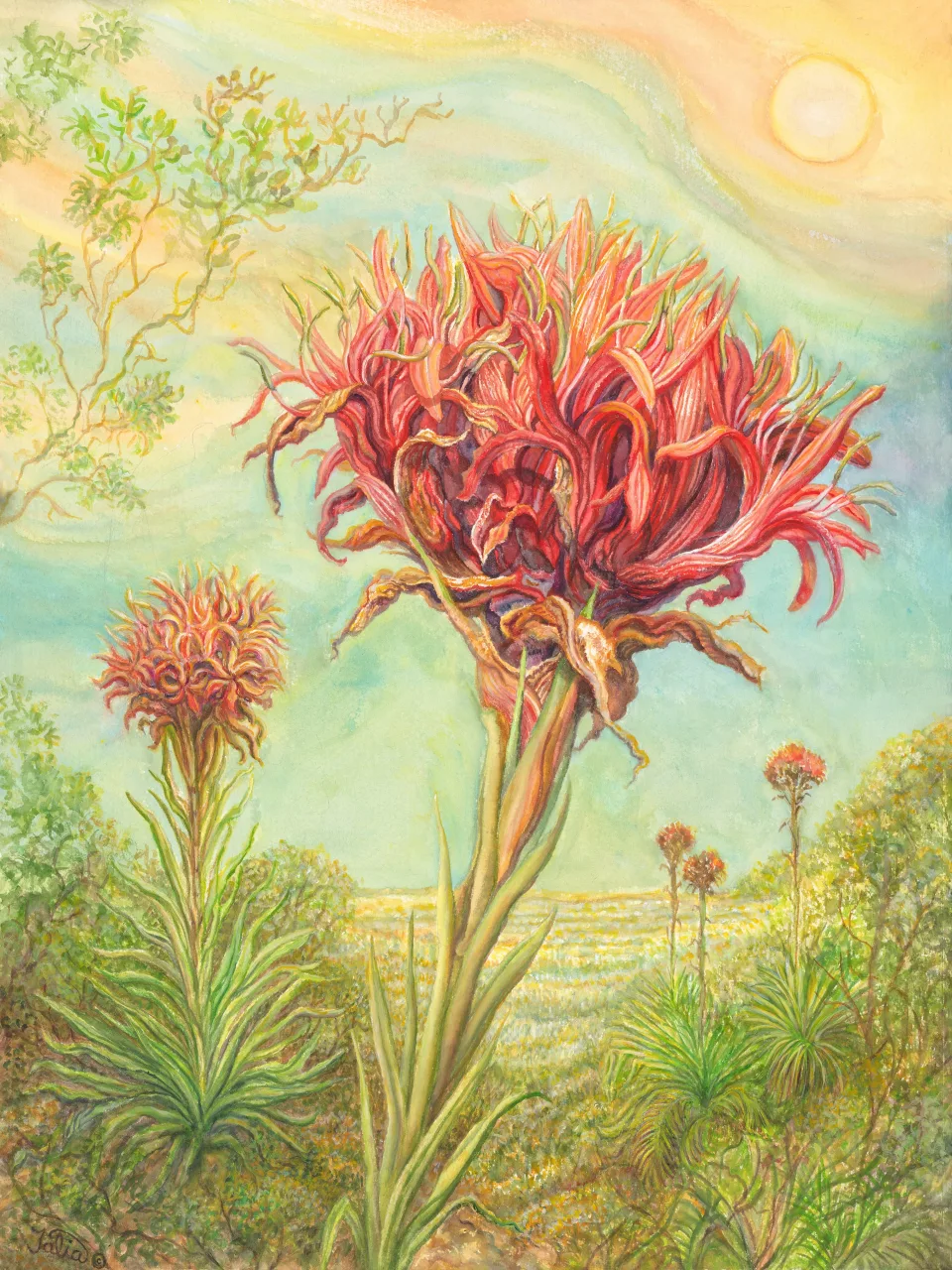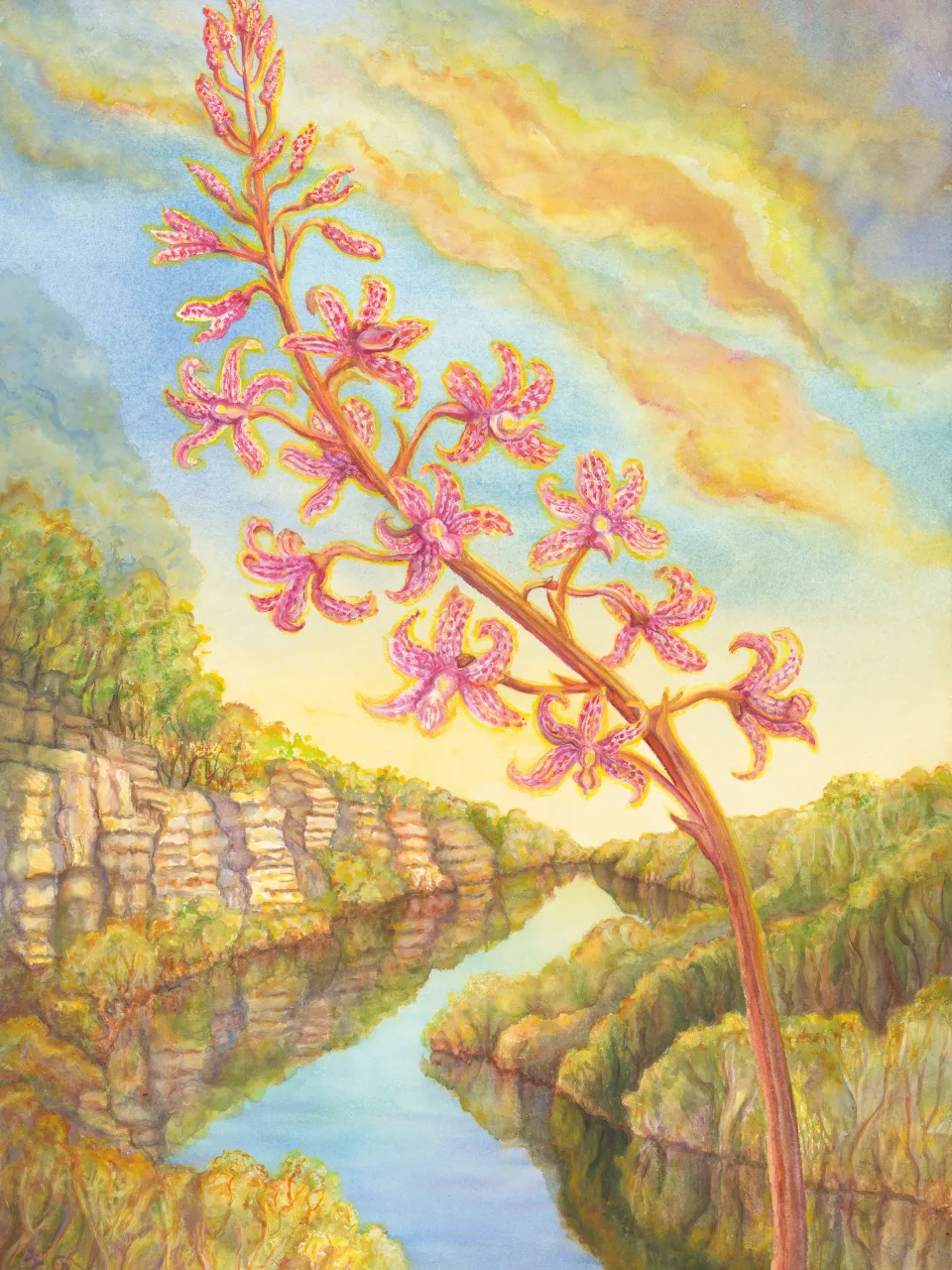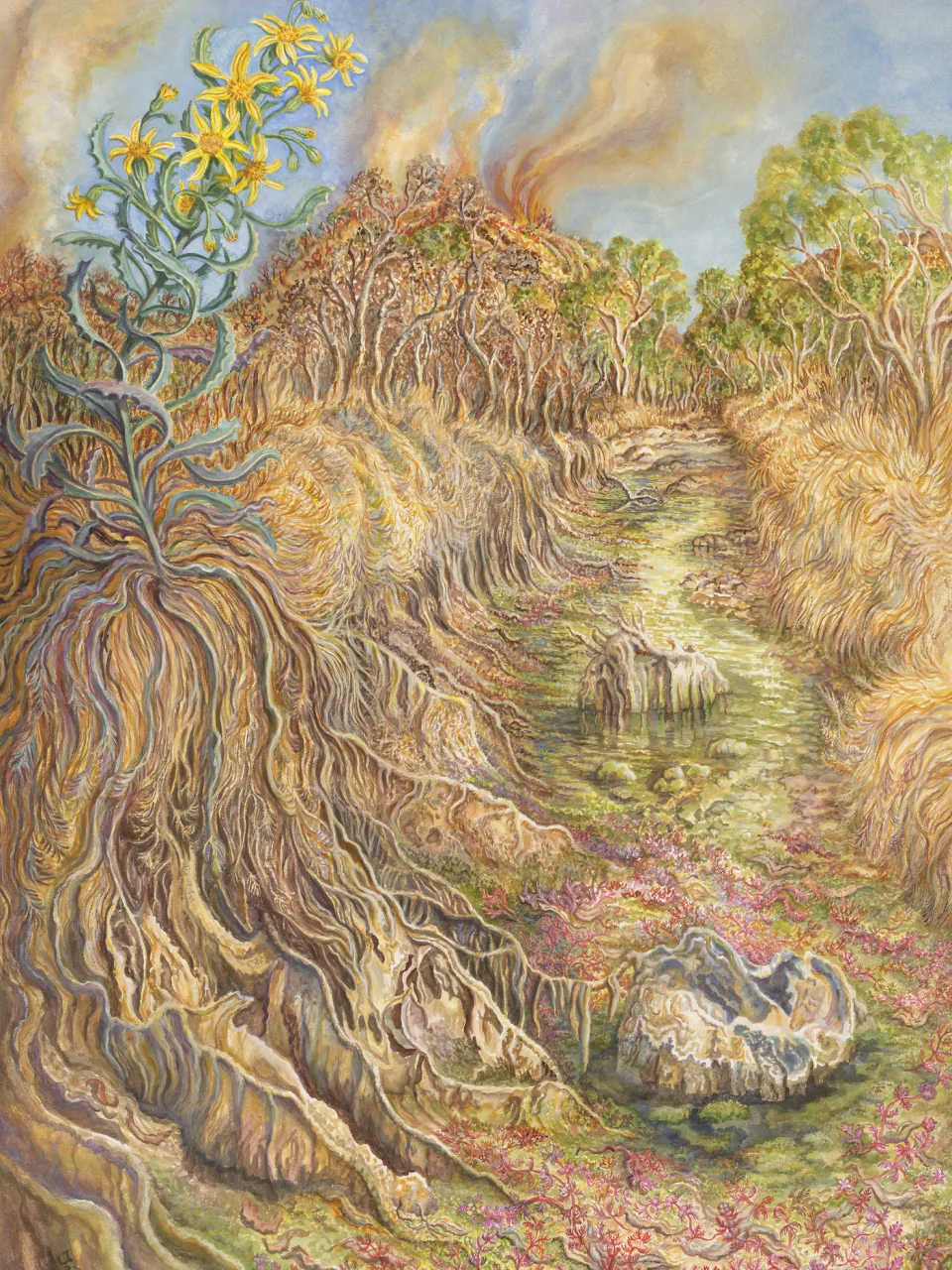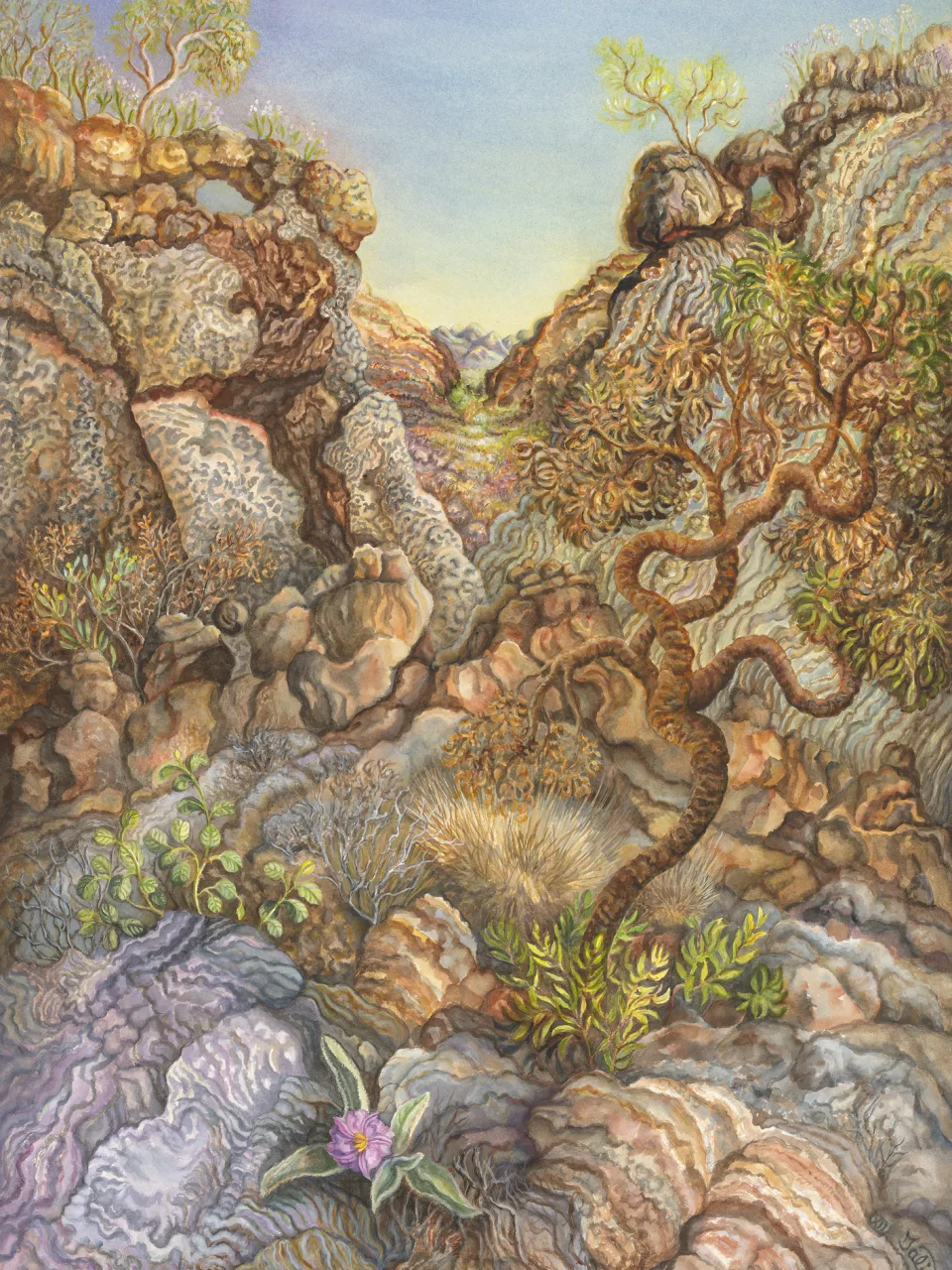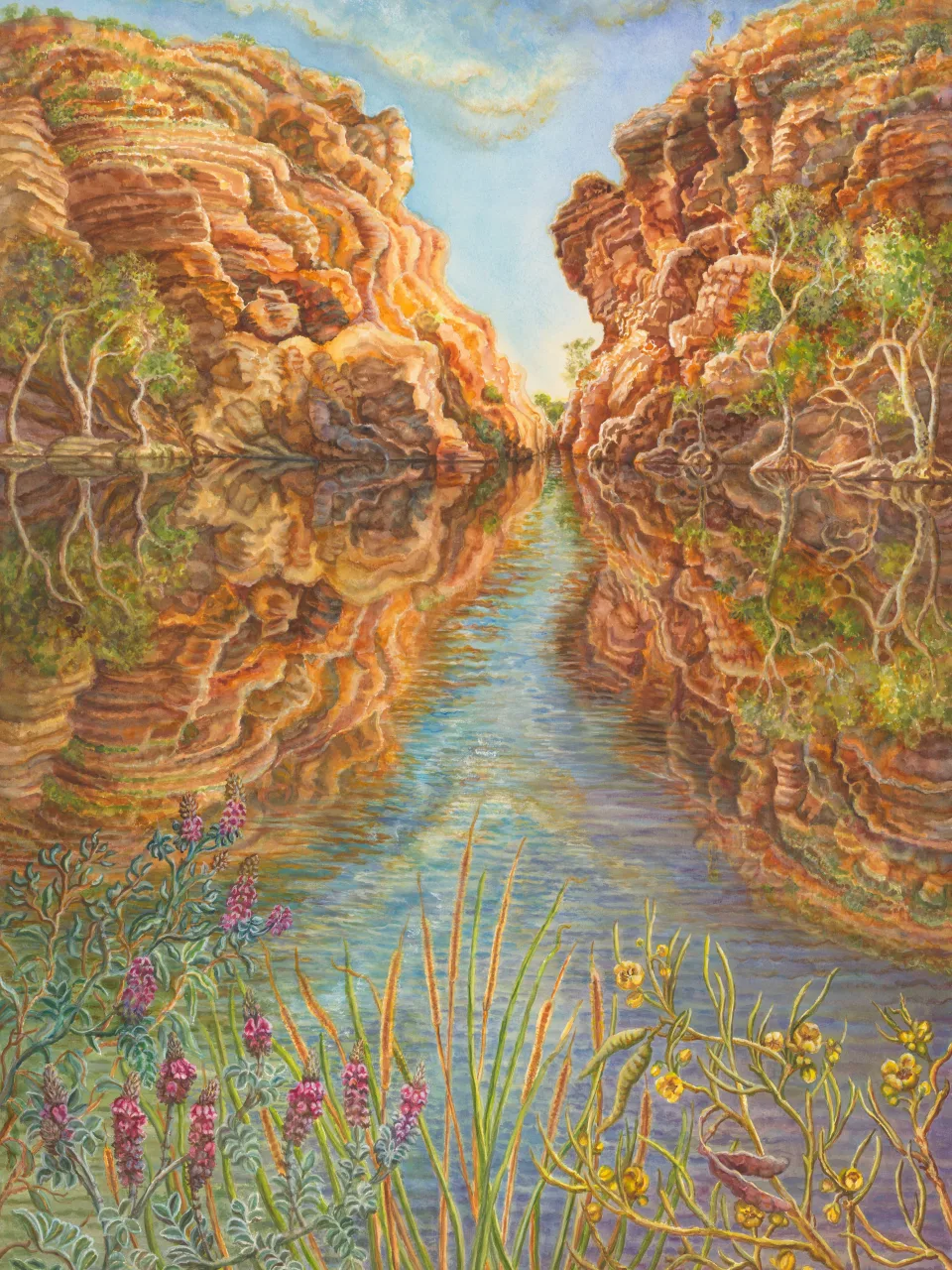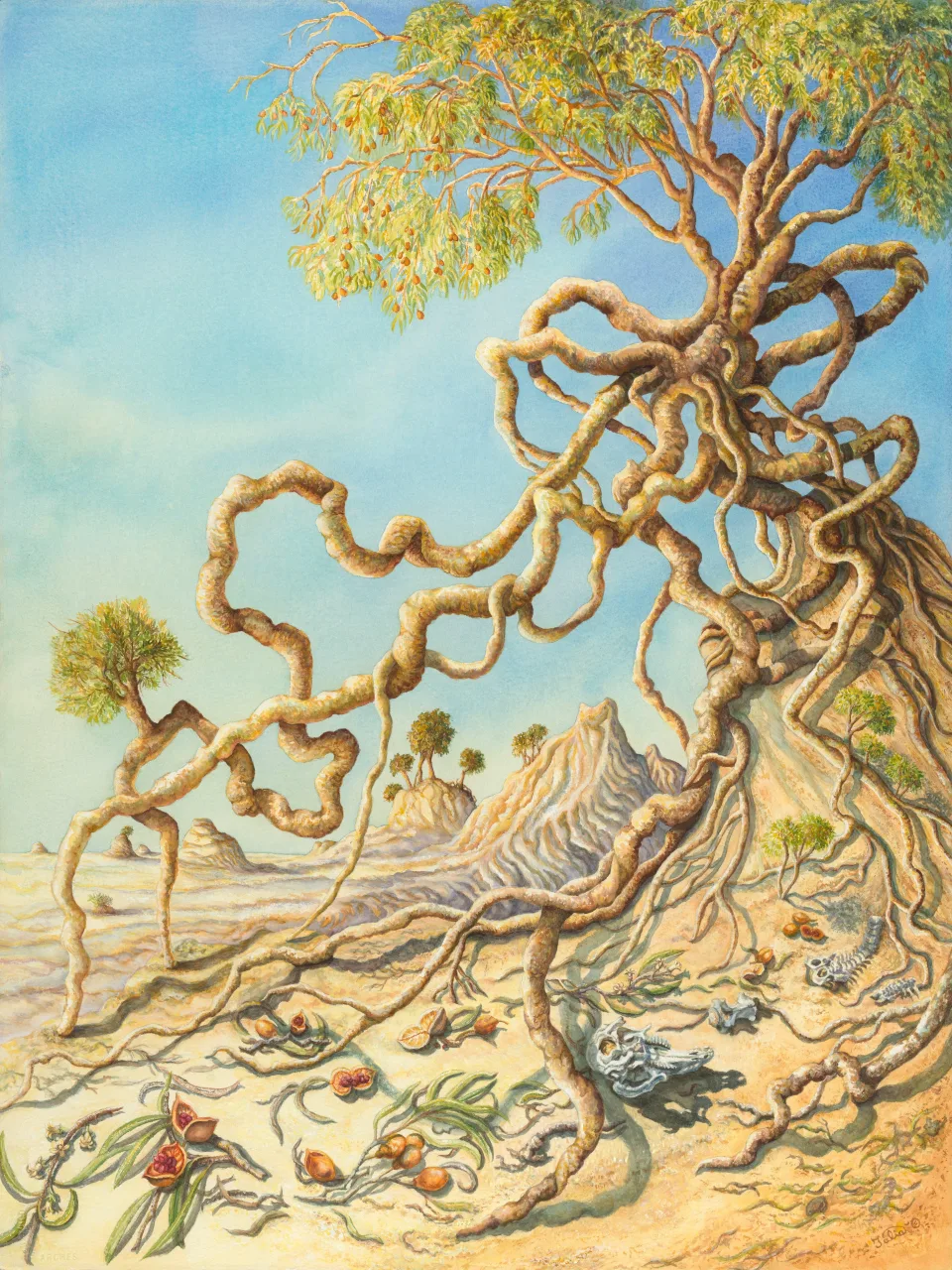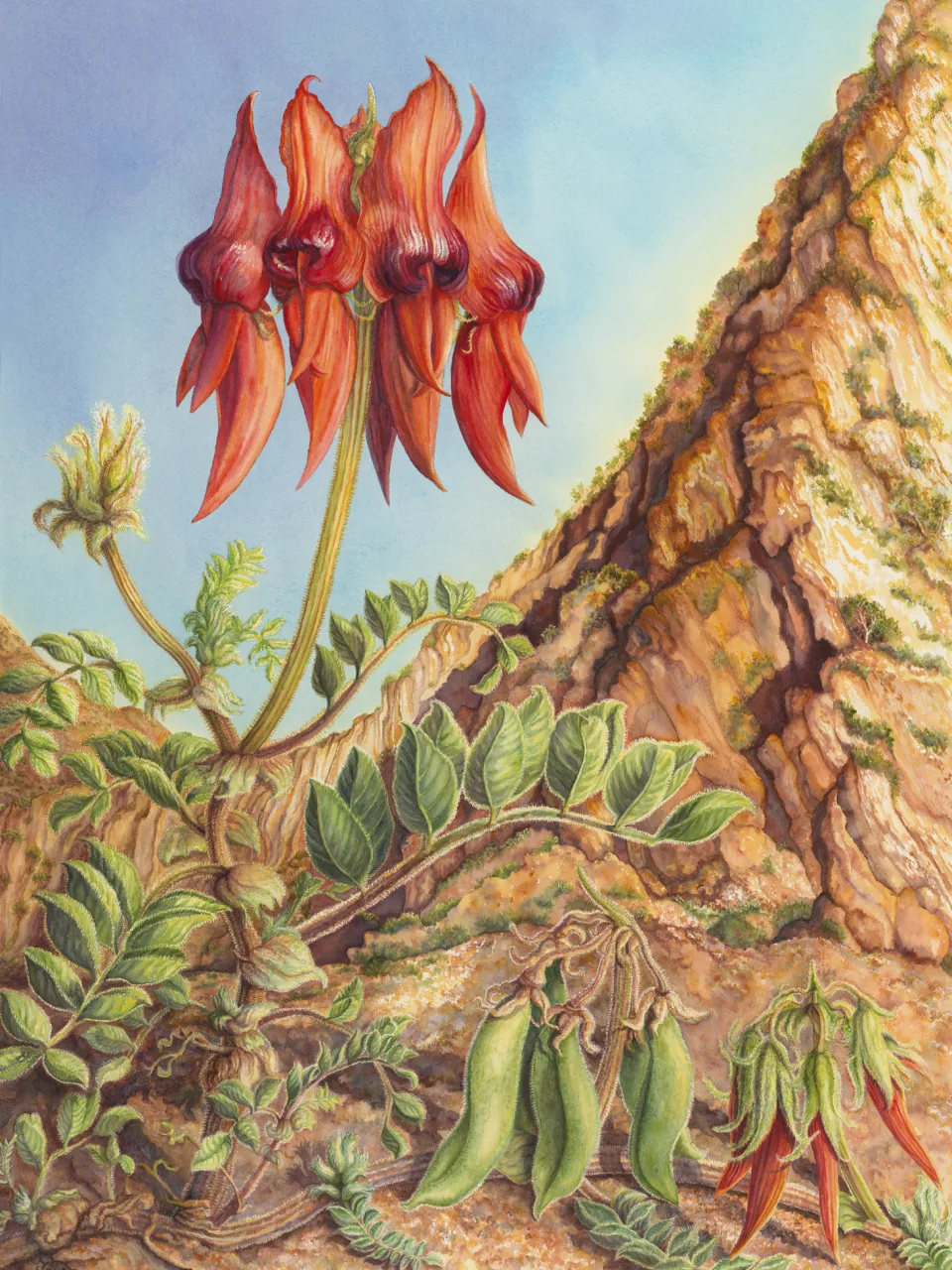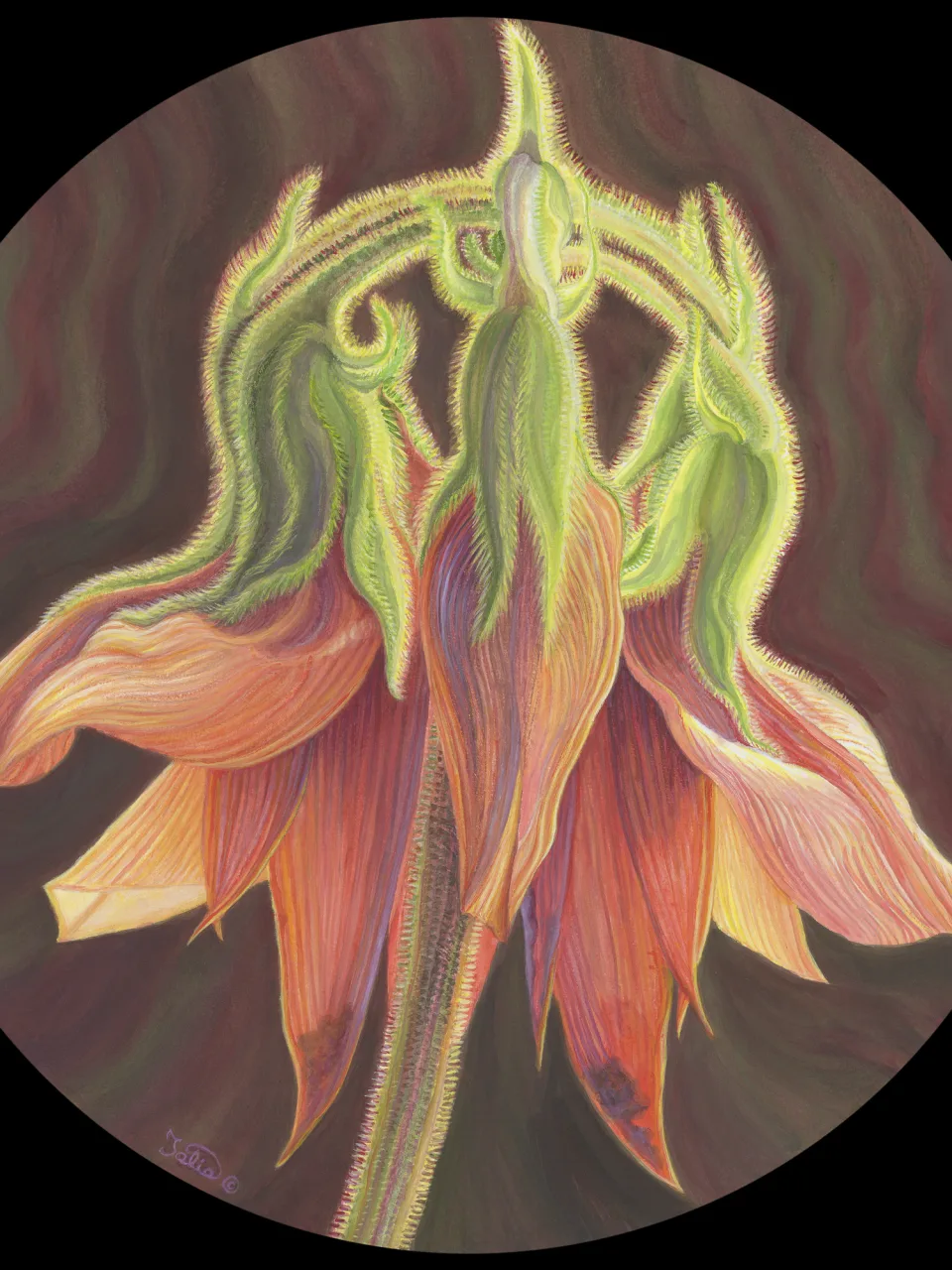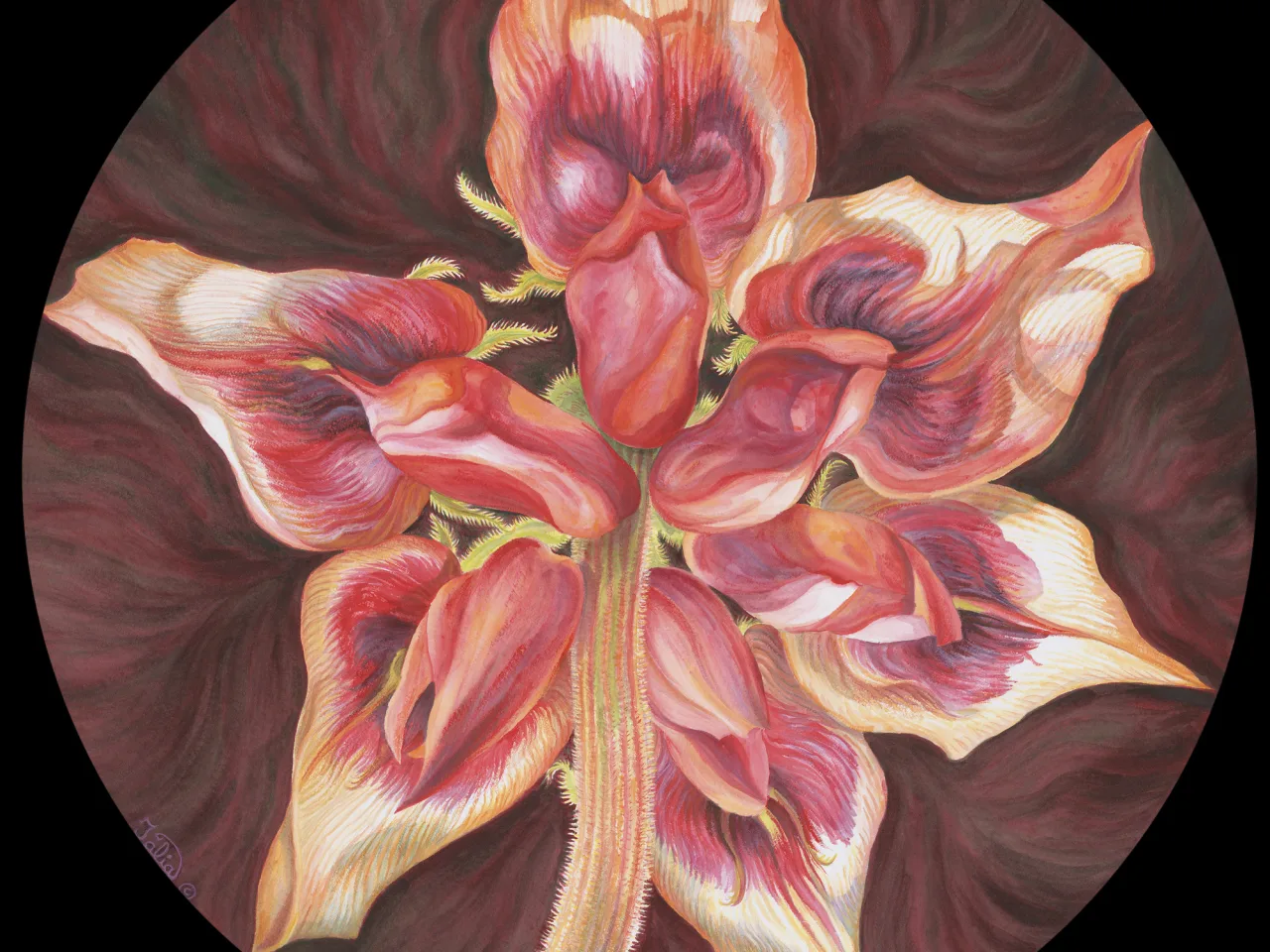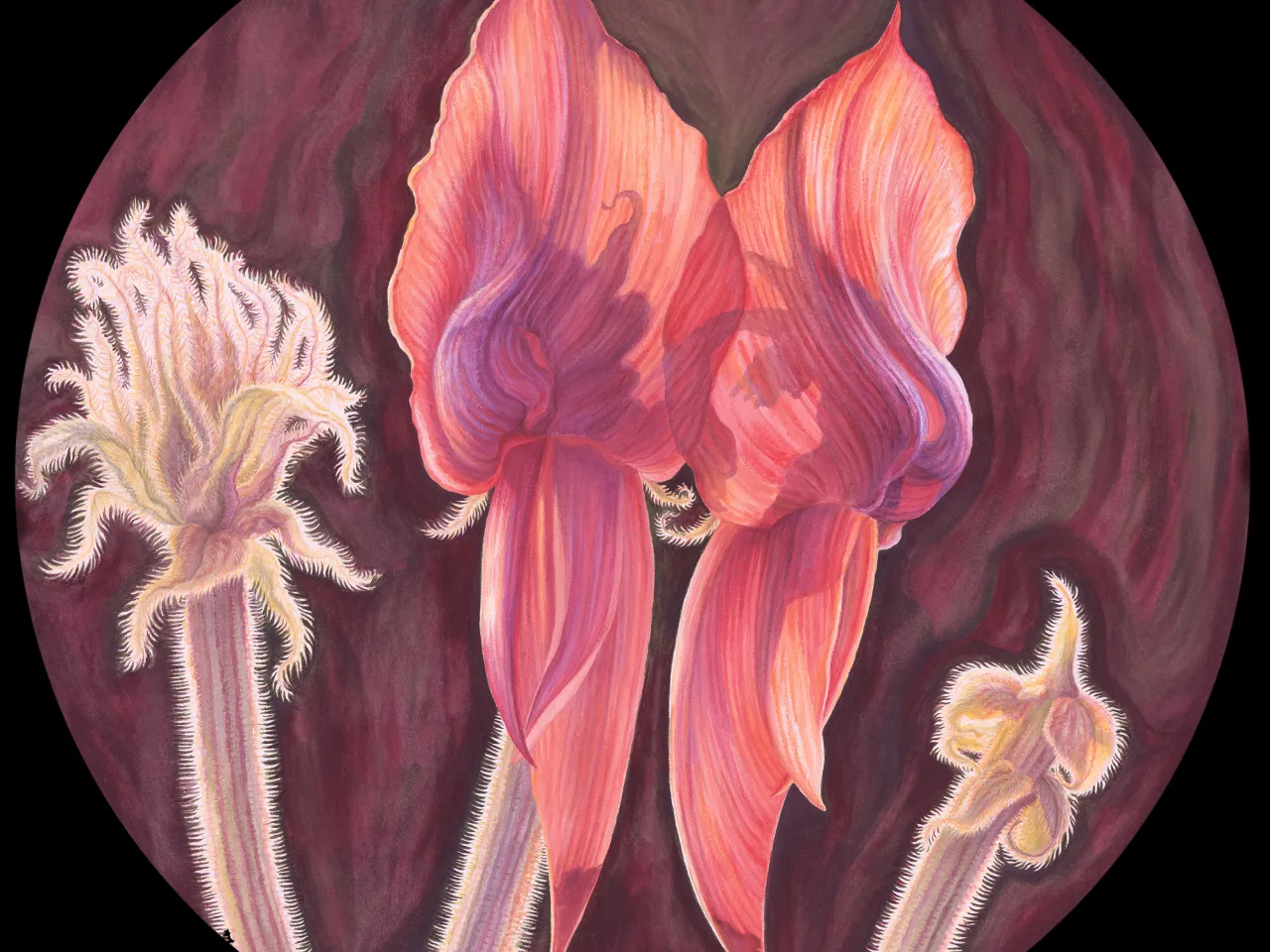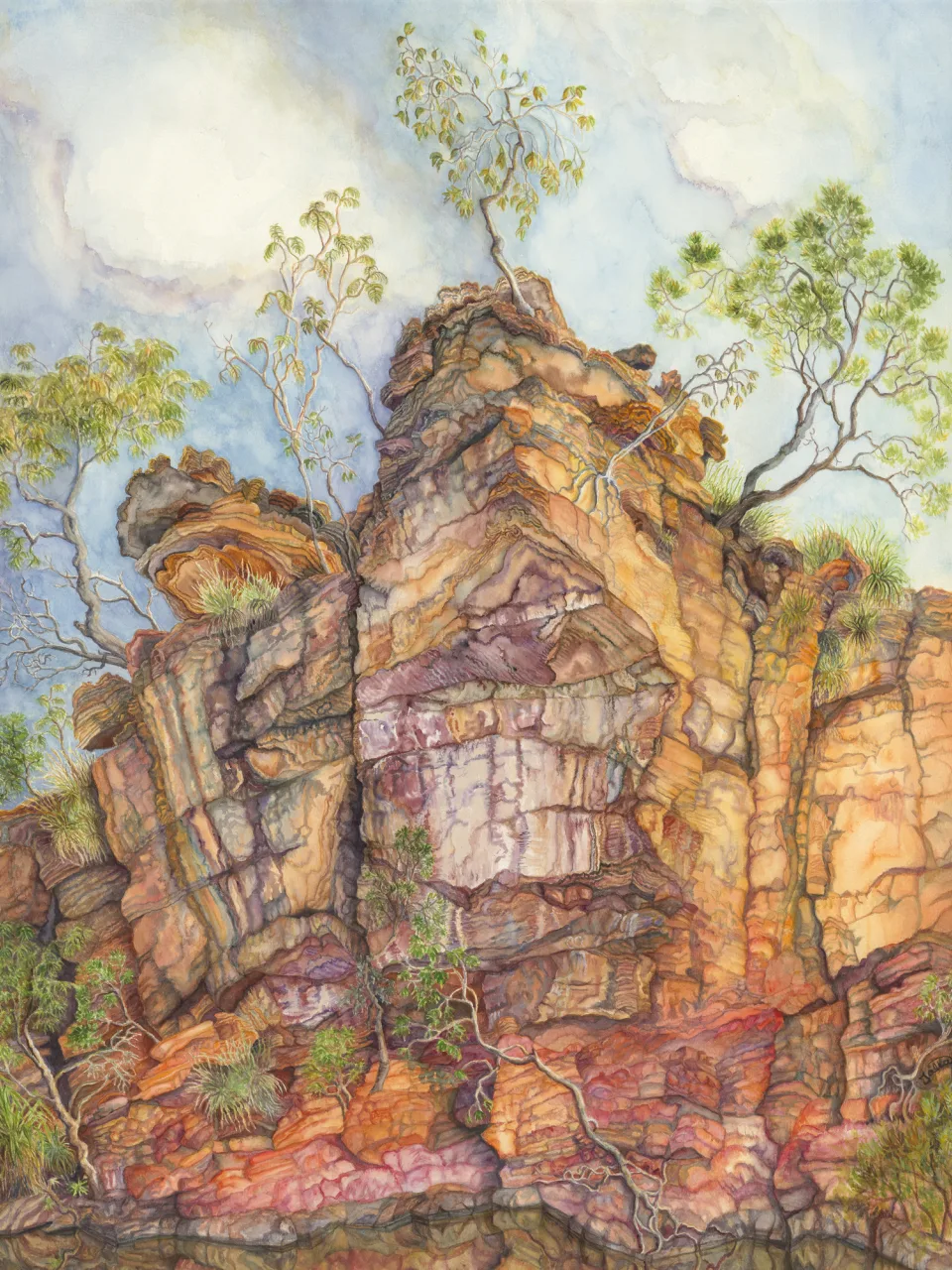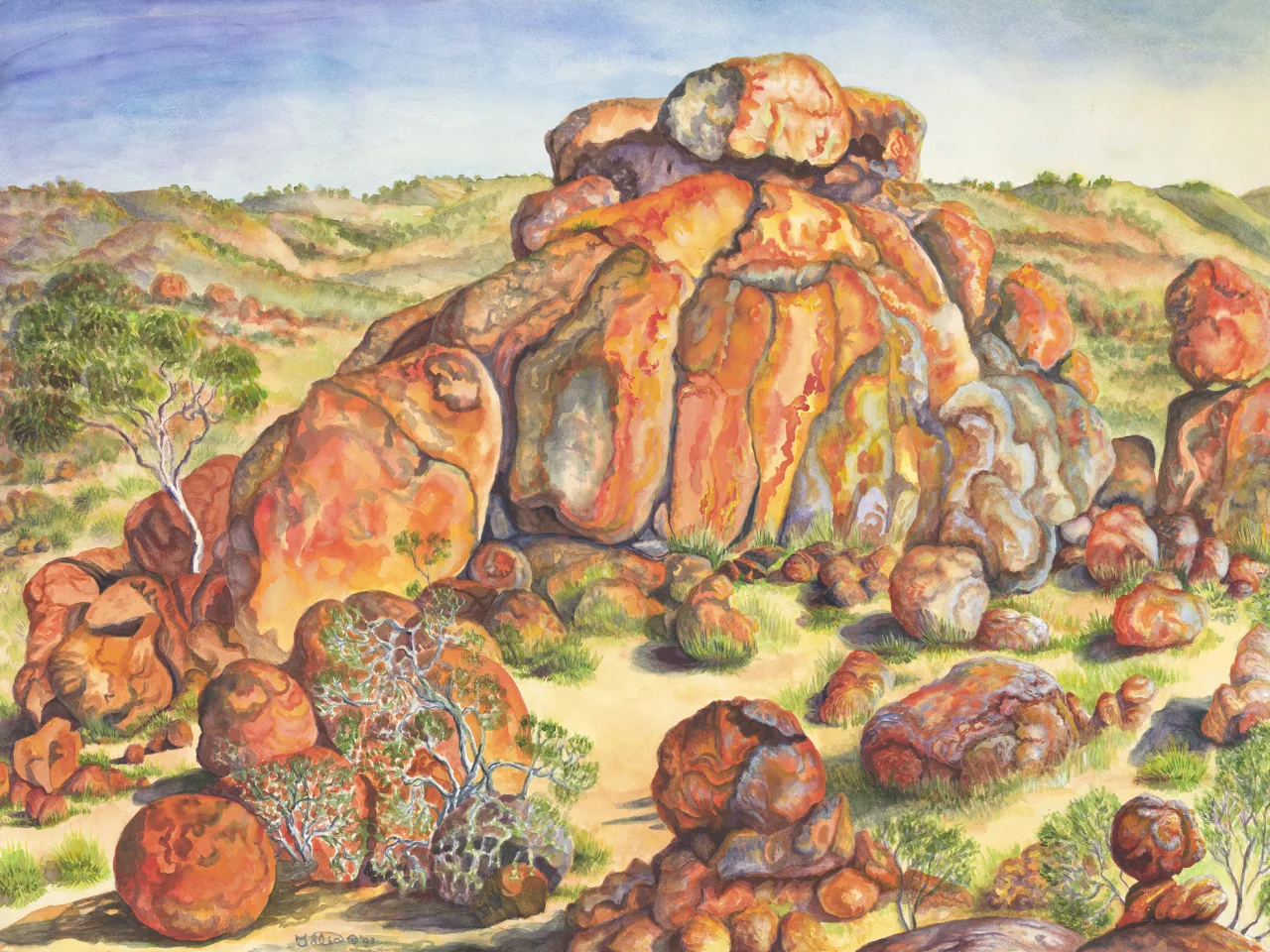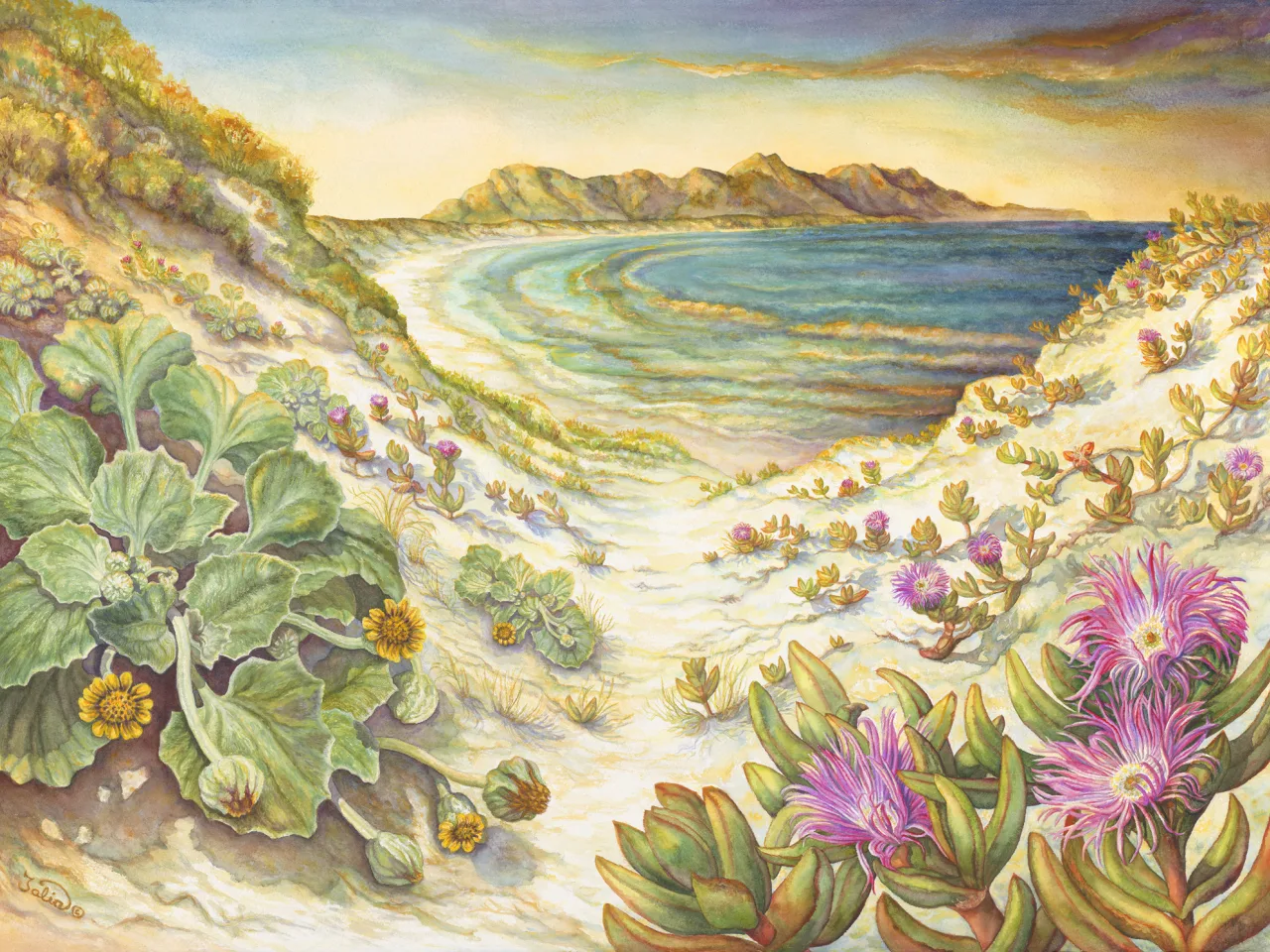Artwork 1 Stromatolite Genesis
Section 1
Stromatolites
Ellery Creek, Tjorita / West MacDonnell National Park, Northern Territory
- 1. Abutilon leucopetalum (yellow desert lantern flowers)
- 2. Ficus platypoda (native fig trees)
Artwork 1
Buy a print
Limited edition giclee archival quality print on 310 gsm Ilford cotton rag (from an original work in watermedia on watercolour paper, 75 cm high x 105 cm wide)
from the artist
The major inspiration for this painting was our visit to Hamelin Pool, an inlet of Shark Bay in Western Australia. The blue-green bay before us contained a miniature city of mushroom-shaped domes called stromatolites, glowing golden-brown in the late afternoon light. Many are about 1,000 years old, and still very slowly growing, at a rate of about 1 mm per year. The dome builders are oxygen-producing microorganisms called cyanobacteria, and the upper layers of stromatolites swarm with these minute organisms as they seek to absorb energy from the Sun in daylight hours.
Stromatolites were the dominant form of life on Earth between about 2,800 mya–540 mya (McNamara, 1997). By releasing free oxygen into the atmosphere, the ancestors of the cyanobacteria at Hamelin Pool played a crucial role in allowing life as we know it to emerge on the Earth.
In the course of our travels we became adept at discovering fossil stromatolites, and these also feature in this work.
In the right foreground are examples from the Flinders Ranges in South Australia, dated from the Trezona Formation about 630 mya. We discovered a large field of stromatolites here, stretching like a gigantic patchwork quilt over a landscape dotted with yellow desert lantern flowers (Abutilon leucopetalum). This onetime ancient shallow sea now lies dry and exposed.
To the left, under the Moon, are fossil stromatolites from the Ellery Creek area in the West MacDonnell Ranges near Alice Springs. If you explore the ridges near the camp site, you can soon observe rows of mushroom shapes linked by razor-sharp blue-grey limestone meandering down many slopes, in what is known as the Bitter Springs Formation (Thompson, 1995).
In amongst the Ellery fossils on the left in Stromatolite Genesis are native fig trees (Ficus platypoda), great survivors on arid, rocky slopes.
The Sun and the Moon appear often in my paintings, both because they are beautiful and frequently spectacular in appearance, but also because without them there would be no life on Earth today. The Sun provides energy, light, and warmth. The Moon protects the Earth from being pulled around by gravity from the giant planets in our solar system, leading to alternate freezing and frying; and when much nearer to the Earth, enormous ancient tides opened cracks in the ocean floor, allowing the creation of hydrothermal vents where life may have begun in its earliest form (Stewart & Lynch, 2007).
